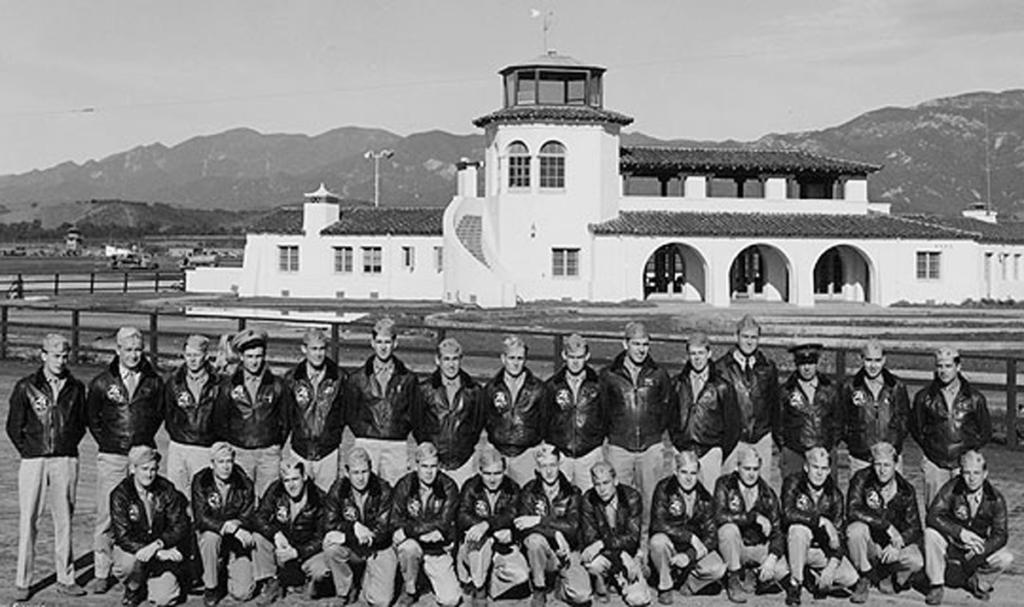 World War II brought a lot of changes to our world, and Goleta was no exception. Our little airport served as the backdrop for a Marine air station that served as a training base for multiple squadrons that went on to support combat operations in the Pacific Theater. This sleepy little agriculture village was abruptly invaded by the United States Marines in 1942, and the work they did in a few short years changed Goleta forever.
World War II brought a lot of changes to our world, and Goleta was no exception. Our little airport served as the backdrop for a Marine air station that served as a training base for multiple squadrons that went on to support combat operations in the Pacific Theater. This sleepy little agriculture village was abruptly invaded by the United States Marines in 1942, and the work they did in a few short years changed Goleta forever.
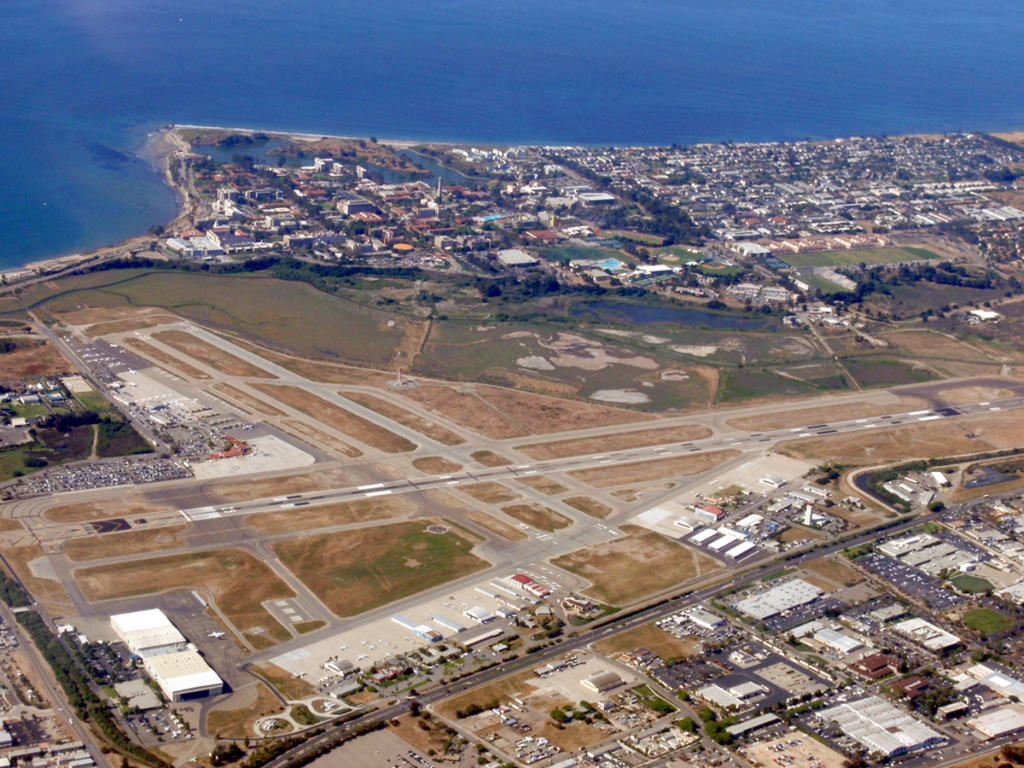 This is how things look today. The ever expanding UCSB at the top and the Santa Barbara Airport at the bottom. The size of the airport and the location of the university are both direct results of the U.S. Marine base.
This is how things look today. The ever expanding UCSB at the top and the Santa Barbara Airport at the bottom. The size of the airport and the location of the university are both direct results of the U.S. Marine base.
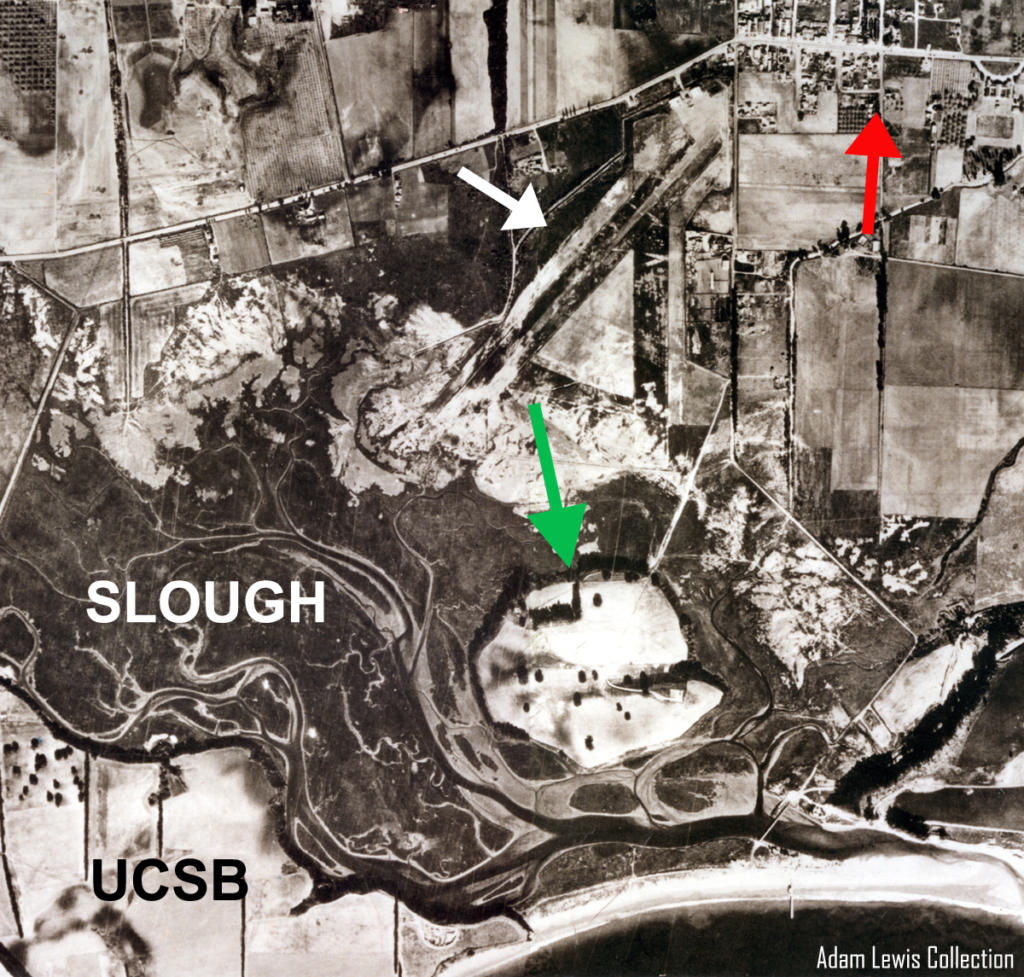 This photo from 1938 shows how things looked a few years before before the war. The red arrow points to downtown Goleta. The white arrow shows the single runway of the earliest stages of the airport. The green arrow points to a complete Mescaltitlan Island. The slough was still a large lagoon of sorts, and the mesa that holds UCSB was farmland.
This photo from 1938 shows how things looked a few years before before the war. The red arrow points to downtown Goleta. The white arrow shows the single runway of the earliest stages of the airport. The green arrow points to a complete Mescaltitlan Island. The slough was still a large lagoon of sorts, and the mesa that holds UCSB was farmland.
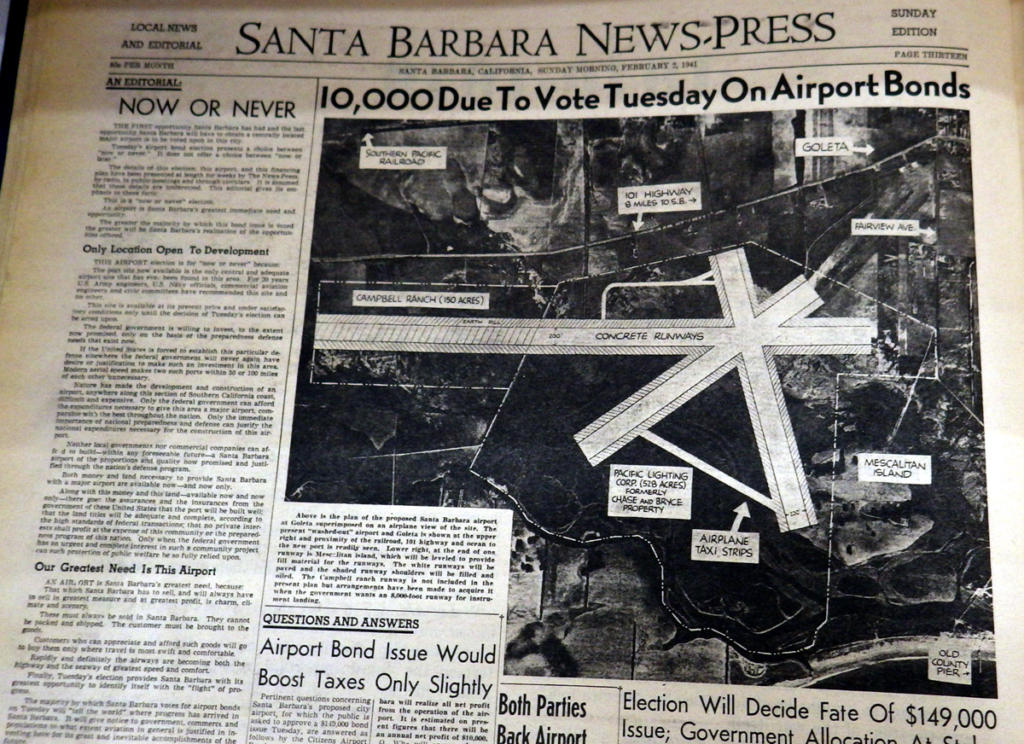 As tensions in the world increased, the United States Government established a program to construct airports across the country on a cost-sharing basis with local governments. Since Goleta already had a little airfield with a lot of empty land around it, it seemed a natural for expansion. Thomas M. Storke, editor and publisher of the News Press, used his influence to secure Santa Barbara’s enrollment in the government program.
As tensions in the world increased, the United States Government established a program to construct airports across the country on a cost-sharing basis with local governments. Since Goleta already had a little airfield with a lot of empty land around it, it seemed a natural for expansion. Thomas M. Storke, editor and publisher of the News Press, used his influence to secure Santa Barbara’s enrollment in the government program.
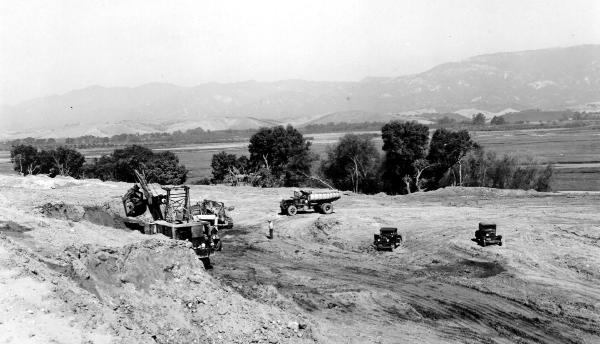 In 1941, construction began on the new Santa Barbara Municipal Airport. A portion of Mescaltitlan Island was used as fill dirt to turn the marshlands of the slough into runways and a beautiful Spanish style terminal was built to service commercial air customers.
In 1941, construction began on the new Santa Barbara Municipal Airport. A portion of Mescaltitlan Island was used as fill dirt to turn the marshlands of the slough into runways and a beautiful Spanish style terminal was built to service commercial air customers.
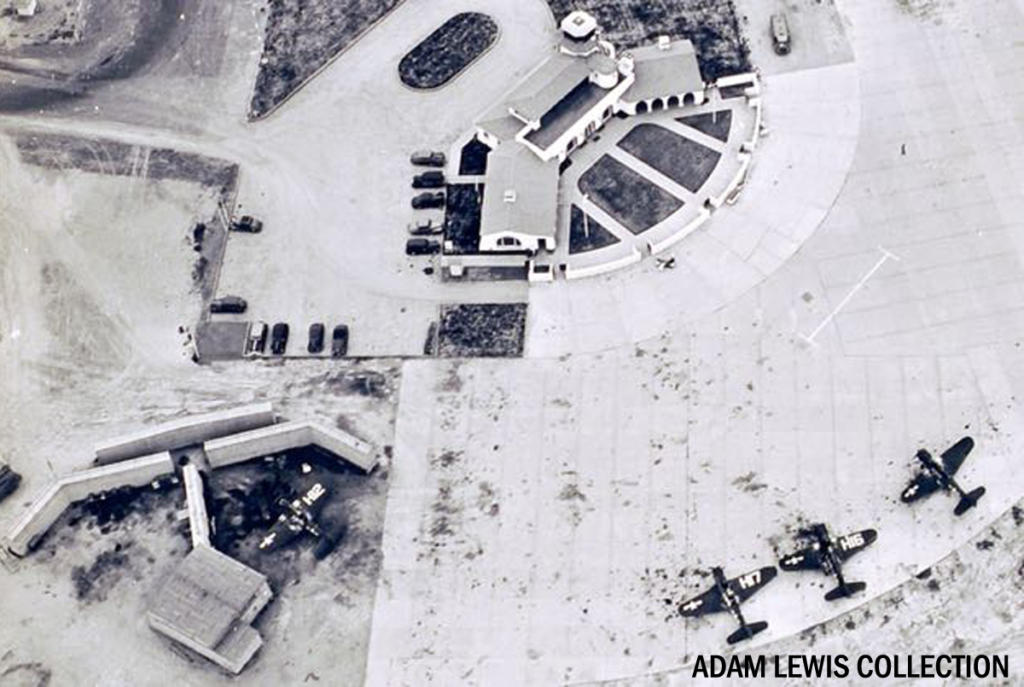 After we entered the war, the United States Army began building concrete revetments, seen on the lower left, and they stationed fighter planes at the airport. The Navy sent the first Marines to Goleta in 1942 and they petitioned the government to make it a Marine base. They chose Goleta because the climate allowed year round training and because an airfield was already in place.
After we entered the war, the United States Army began building concrete revetments, seen on the lower left, and they stationed fighter planes at the airport. The Navy sent the first Marines to Goleta in 1942 and they petitioned the government to make it a Marine base. They chose Goleta because the climate allowed year round training and because an airfield was already in place.
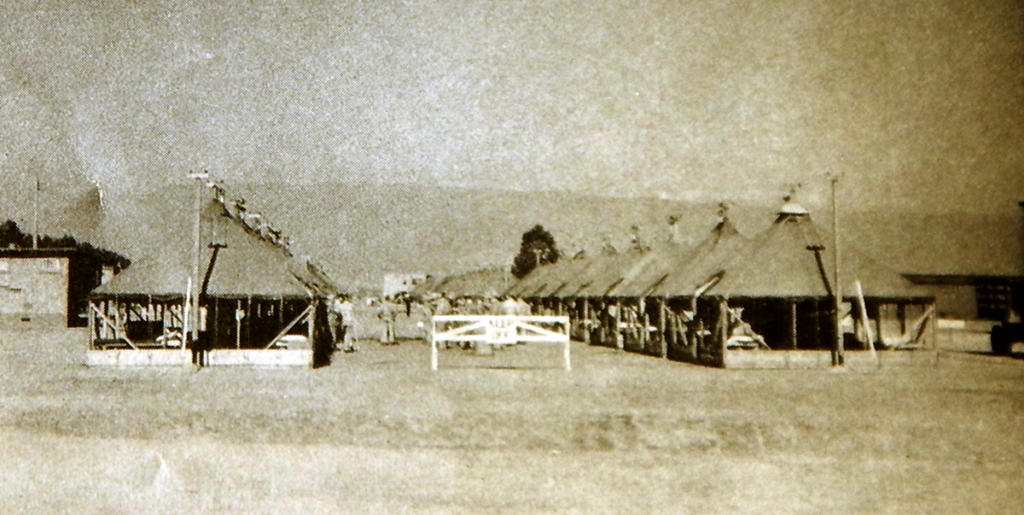 Tents were set up as temporary barracks on the dry, high ground at the northeast end of the airport. Drinking water had to be trucked in from town.
Tents were set up as temporary barracks on the dry, high ground at the northeast end of the airport. Drinking water had to be trucked in from town. 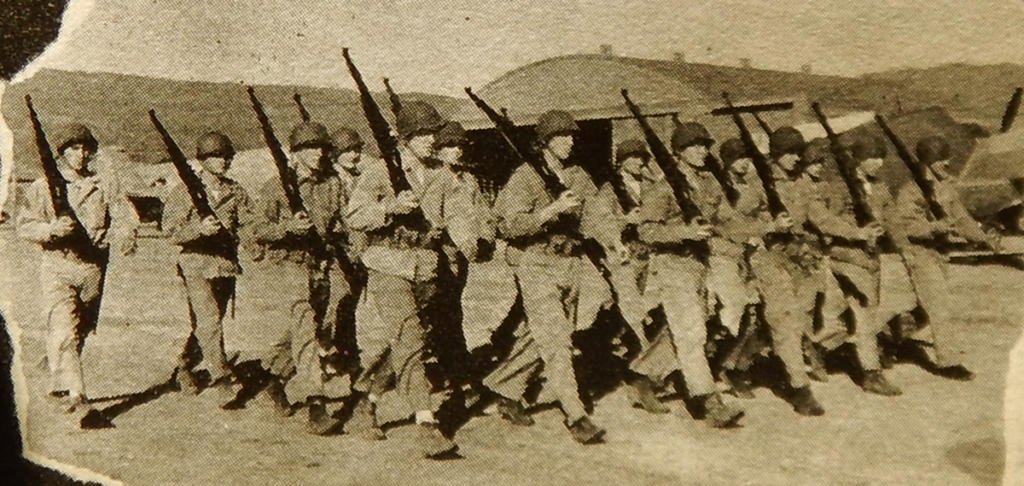
The two old General Western hangars were used for additional barracks and a mess hall.
A temporary station headquarters was set up in the old terminal building and for squadron areas they used the former Army revetments. The old terminal in the middle has been demolished, but the two original hangars still stand today near the corner of Hollister and Fairview, patiently awaiting restoration.
The old terminal in the middle has been demolished, but the two original hangars still stand today near the corner of Hollister and Fairview, patiently awaiting restoration.
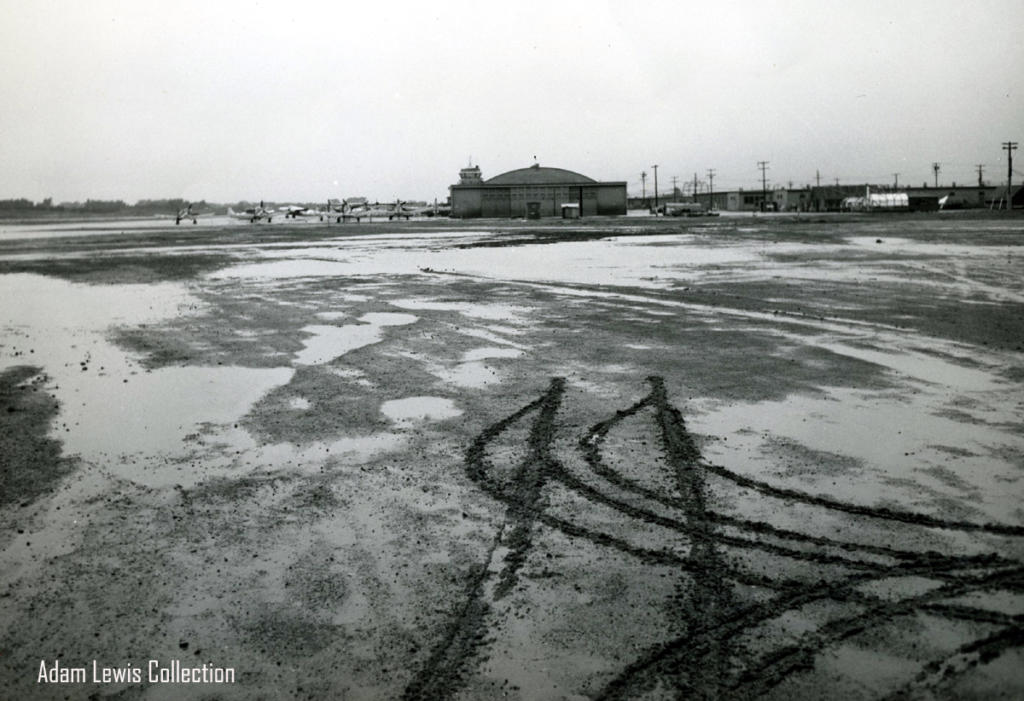 Things were pretty rough for the first Marines. High tides and heavy rains flooded the landing field with mud, so four-wheel drive Jeeps were required to get around the base. Mosquitoes were abundant and a constant nuisance. The Marines nicknamed the station “The Swamp” and a standing joke among the pilots was to request permission to land on Santa Barbara Lake.
Things were pretty rough for the first Marines. High tides and heavy rains flooded the landing field with mud, so four-wheel drive Jeeps were required to get around the base. Mosquitoes were abundant and a constant nuisance. The Marines nicknamed the station “The Swamp” and a standing joke among the pilots was to request permission to land on Santa Barbara Lake.
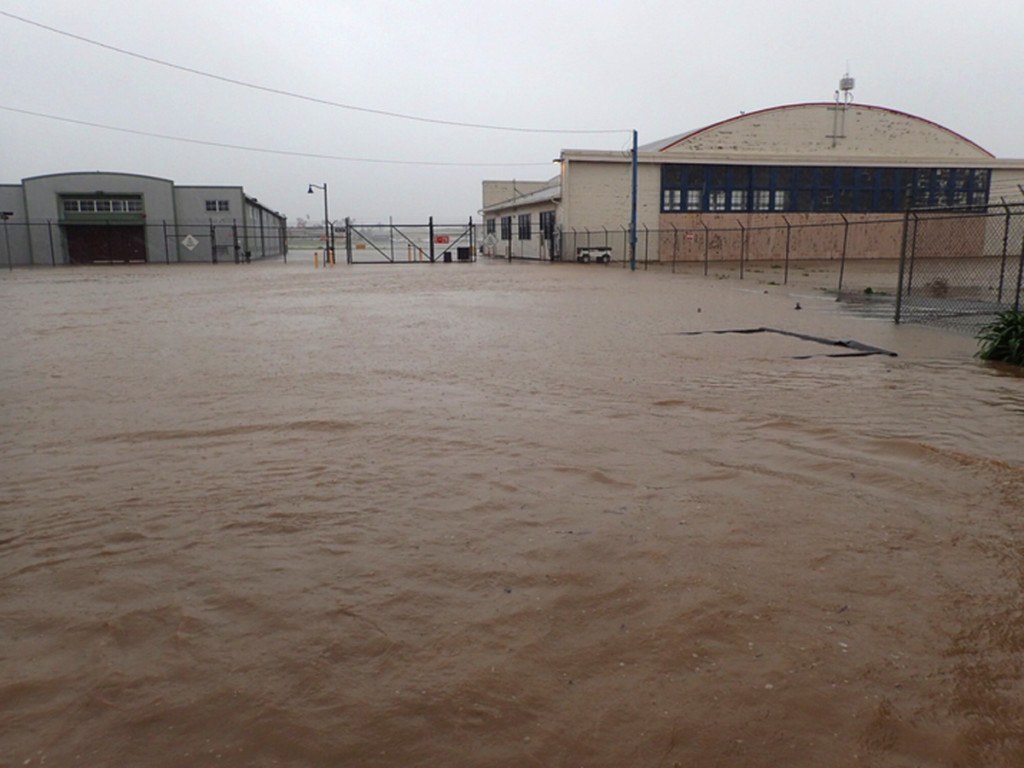
A problem the airport built on a slough still has to this day…. Another thing that made life difficult for the first Marines was the stench and flies coming from a thriving hog farm and slaughterhouse on Fairview Avenue. The prevailing winds blew the not so fresh aroma straight at their temporary living quarters.
Another thing that made life difficult for the first Marines was the stench and flies coming from a thriving hog farm and slaughterhouse on Fairview Avenue. The prevailing winds blew the not so fresh aroma straight at their temporary living quarters.  The white arrow shows the slaughterhouse and the red arrow shows the two old hangars in this photo from the 1930’s. The slaughterhouse suffered a mysterious fire, and was soon after removed to make more room for the base.
The white arrow shows the slaughterhouse and the red arrow shows the two old hangars in this photo from the 1930’s. The slaughterhouse suffered a mysterious fire, and was soon after removed to make more room for the base.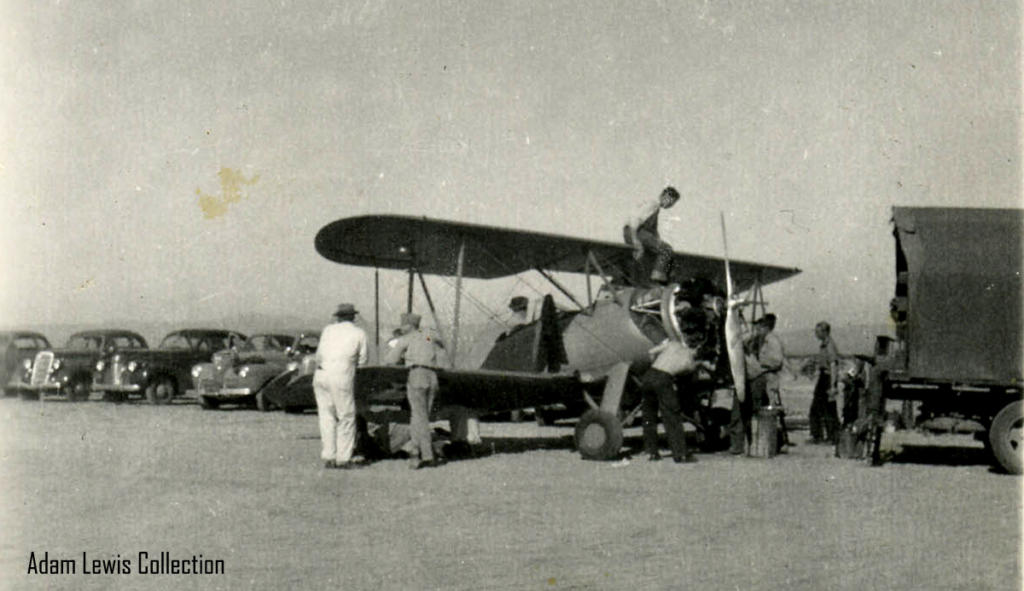 The station was initially equipped with only a few aircraft and at least half were bi-planes. Older planes like this PT-17 Stearman were used for local patrols and some of the old aircraft were fitted with depth charges to defend against another submarine attack. The Japanese sub attack on the oil fields at Ellwood in February of 1942 kept the base on a very high alert. A complete blackout was maintained at night and lookouts were on duty 24/7. The primitive base had many foxholes, gun emplacements, and barbed wire barriers in case of a Japanese land assault.
The station was initially equipped with only a few aircraft and at least half were bi-planes. Older planes like this PT-17 Stearman were used for local patrols and some of the old aircraft were fitted with depth charges to defend against another submarine attack. The Japanese sub attack on the oil fields at Ellwood in February of 1942 kept the base on a very high alert. A complete blackout was maintained at night and lookouts were on duty 24/7. The primitive base had many foxholes, gun emplacements, and barbed wire barriers in case of a Japanese land assault. In August of 1942 the Marine HQ moved out of the old terminal and into the beautiful new United Airlines terminal. Goleta was unique in that the military shared airfields and the terminal with the commercial airport.
In August of 1942 the Marine HQ moved out of the old terminal and into the beautiful new United Airlines terminal. Goleta was unique in that the military shared airfields and the terminal with the commercial airport.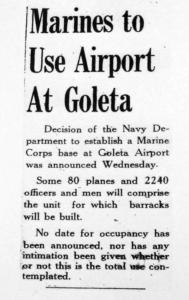 This headline announced the decision in May, 1942 and the airfield was officially commissioned by the Marines on December 4, 1942 as the Marine Corps Air Station Santa Barbara. A lease agreement of $2,600 a year was made with the city of Santa Barbara for the airport property, but the fee was never paid.
This headline announced the decision in May, 1942 and the airfield was officially commissioned by the Marines on December 4, 1942 as the Marine Corps Air Station Santa Barbara. A lease agreement of $2,600 a year was made with the city of Santa Barbara for the airport property, but the fee was never paid. Another unique thing about the Marine base at Goleta was the control tower was shared with the commercial airport. In fact, civilians remained the air traffic controllers for both commercial and Marine flight operations for the duration of the base.
Another unique thing about the Marine base at Goleta was the control tower was shared with the commercial airport. In fact, civilians remained the air traffic controllers for both commercial and Marine flight operations for the duration of the base.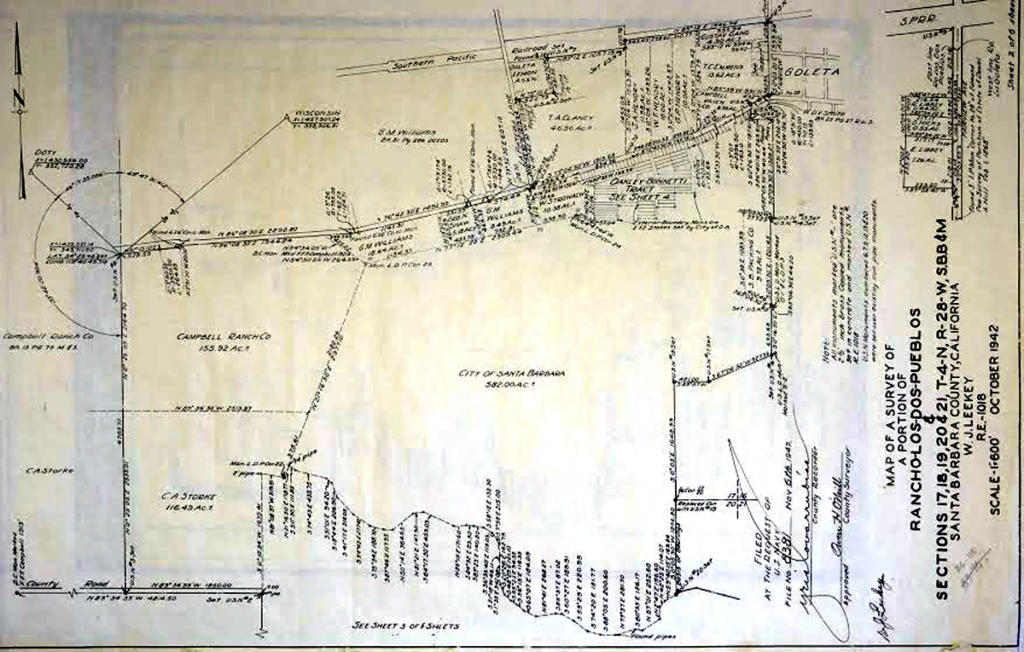 This map shows just a portion of the huge expanse of land that was confiscated to make the existing airport an operational Marine base. The government used eminent domain to confiscate over 70 properties in one swipe and they paid only $80,000 for all of it!
This map shows just a portion of the huge expanse of land that was confiscated to make the existing airport an operational Marine base. The government used eminent domain to confiscate over 70 properties in one swipe and they paid only $80,000 for all of it!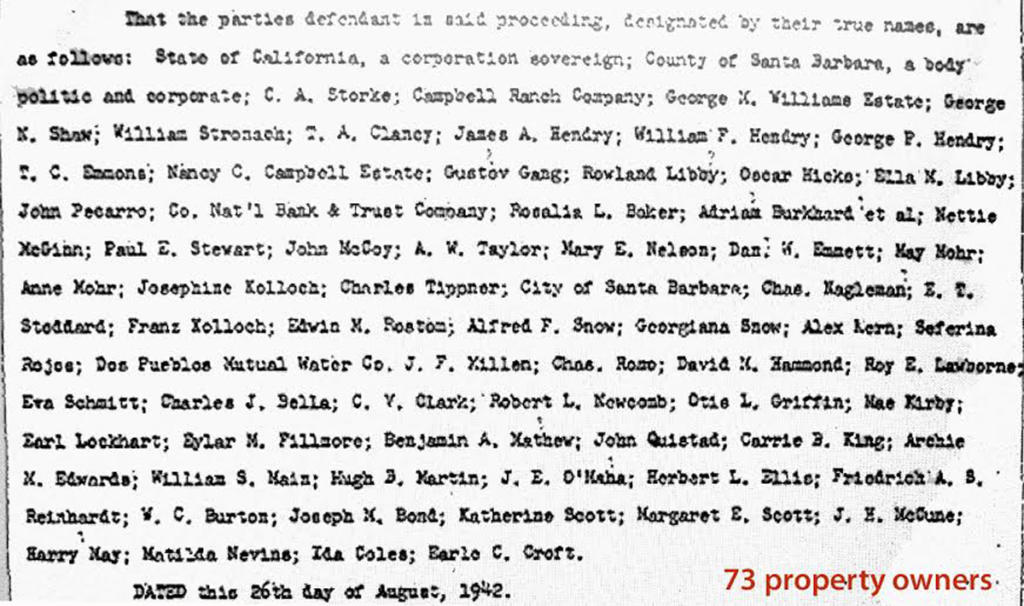 Here is the 1942 land transfer record found by historian Adam Lewis in the County records office. It names all the parties that were forced to sacrifice their land for the cause.
Here is the 1942 land transfer record found by historian Adam Lewis in the County records office. It names all the parties that were forced to sacrifice their land for the cause.
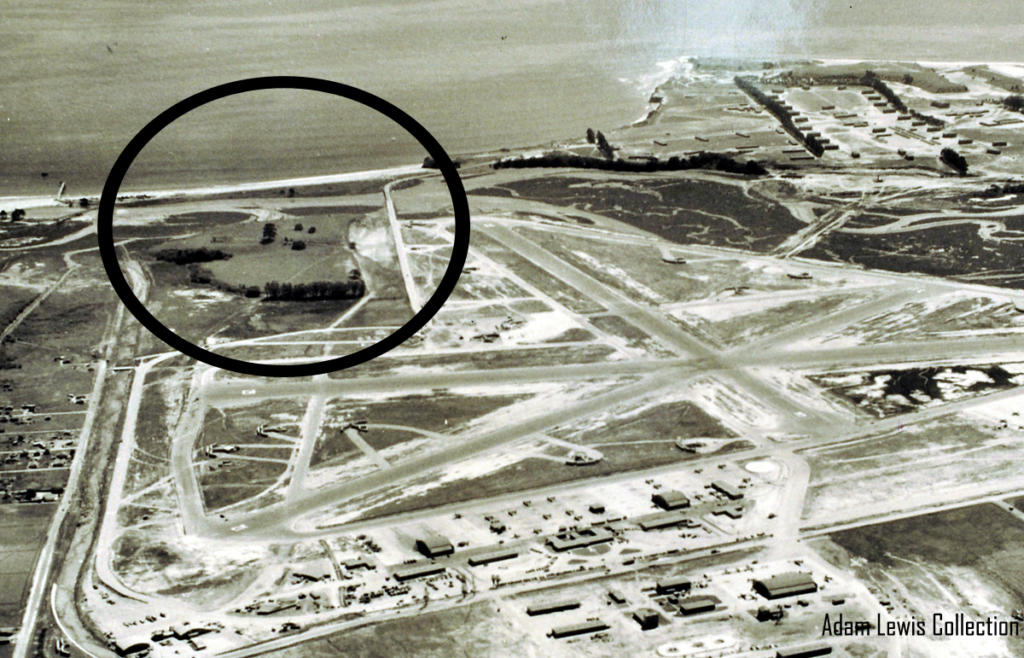 In times of war, things like historic sites and the environment are of little concern. Defending our nation is the top priority and the ends justify the means. The existing runways needed to be expanded for the military aircraft, so more of the slough was filled in with dirt from Mescaltitlan Island (circled) and from the bluffs of Isla Vista.
In times of war, things like historic sites and the environment are of little concern. Defending our nation is the top priority and the ends justify the means. The existing runways needed to be expanded for the military aircraft, so more of the slough was filled in with dirt from Mescaltitlan Island (circled) and from the bluffs of Isla Vista.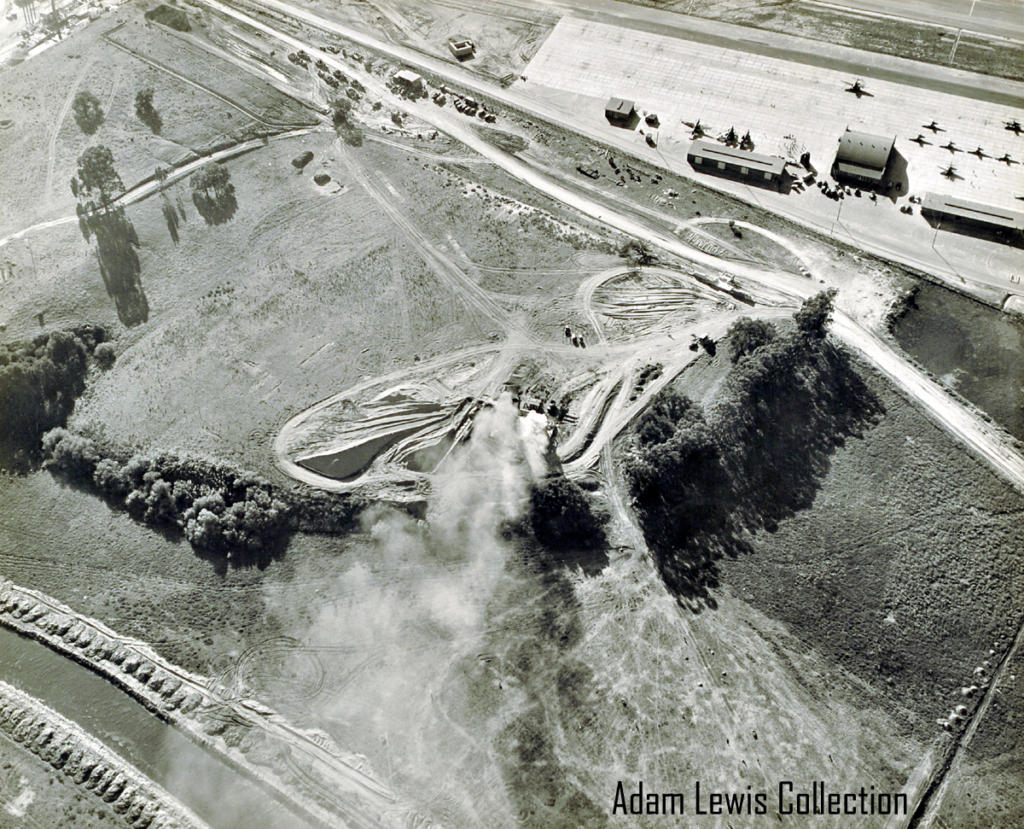 Mescaltitlan Island fill dirt was harvested without any second thoughts about all the prehistoric artifacts the heavy machinery was cutting through. When they were done, about half the island was gone.
Mescaltitlan Island fill dirt was harvested without any second thoughts about all the prehistoric artifacts the heavy machinery was cutting through. When they were done, about half the island was gone.
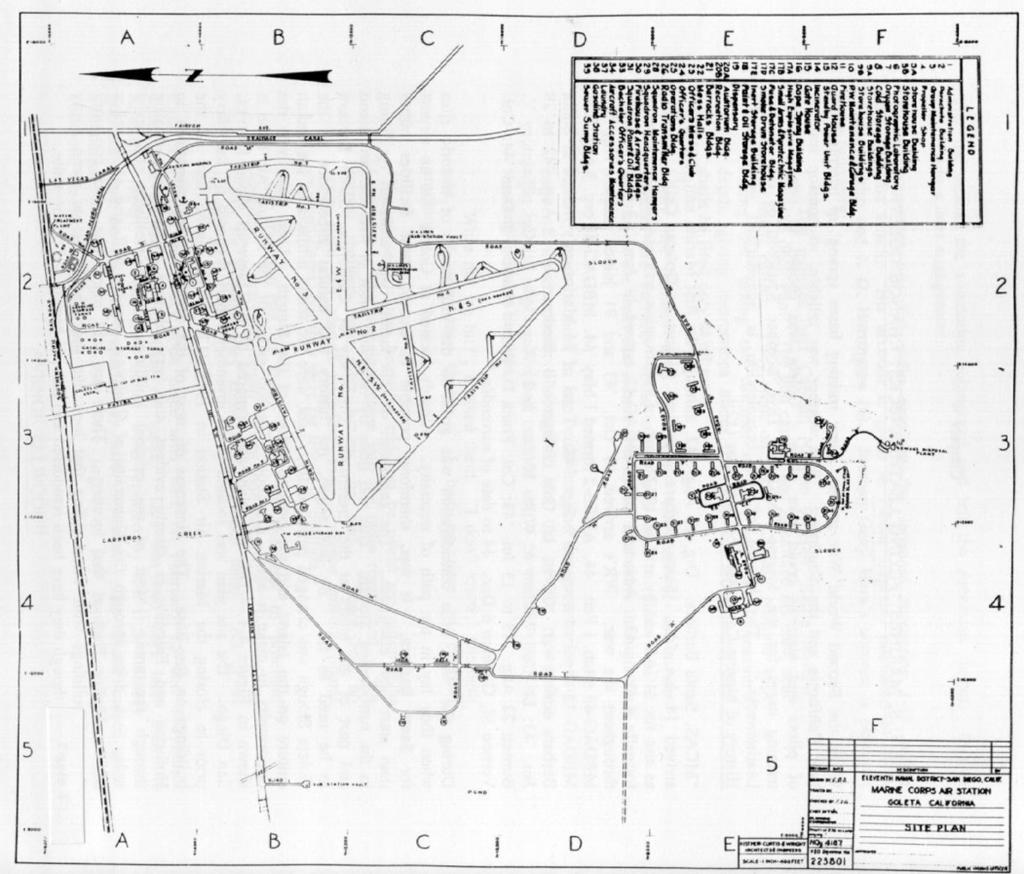 This 1942 site plan shows some extent of the development done by the Marines during their short stay in Goleta. The Navy hired a civilian contractor from Los Angeles to do most of the construction. The government provided unlimited money and materials to complete the project ASAP.
This 1942 site plan shows some extent of the development done by the Marines during their short stay in Goleta. The Navy hired a civilian contractor from Los Angeles to do most of the construction. The government provided unlimited money and materials to complete the project ASAP.
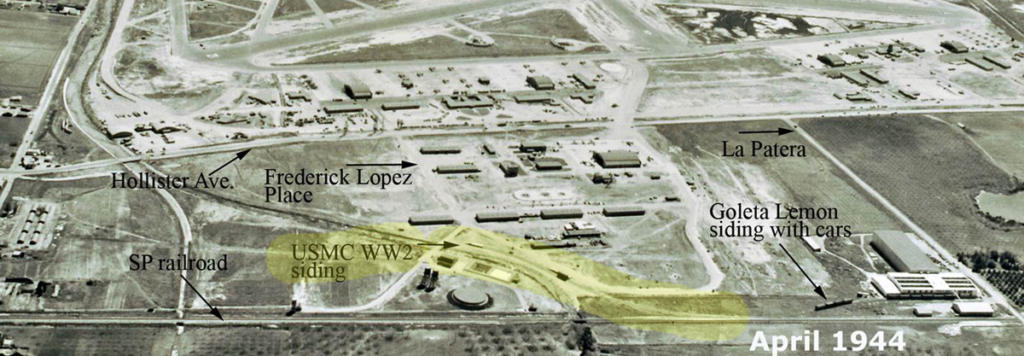 A railroad spur was built to ease the delivery of the massive amounts of materials and machinery needed to build the base as quickly as possible. Time was of the essence.
A railroad spur was built to ease the delivery of the massive amounts of materials and machinery needed to build the base as quickly as possible. Time was of the essence.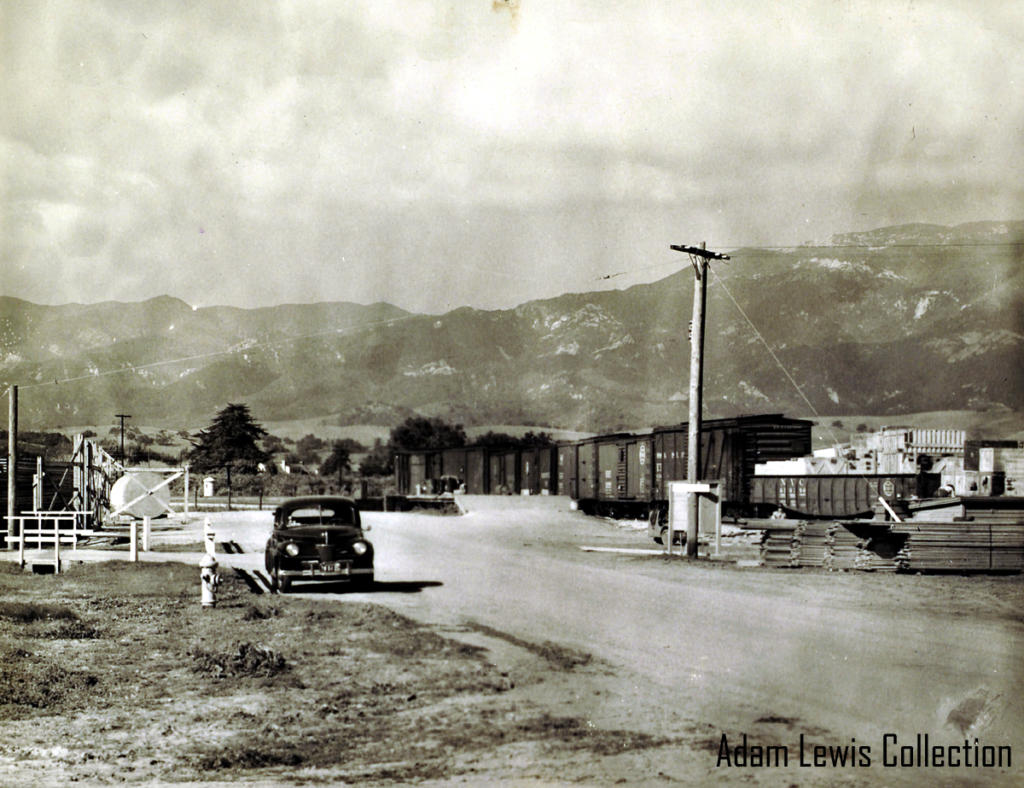 A platform was built on the spur and tons of supplies were delivered to facilitate the round-the-clock construction of the base. The platform remained and was used for supply deliveries throughout the war.
A platform was built on the spur and tons of supplies were delivered to facilitate the round-the-clock construction of the base. The platform remained and was used for supply deliveries throughout the war. This railroad spur still exists and is being used to this day by Hayward Lumber.
This railroad spur still exists and is being used to this day by Hayward Lumber.
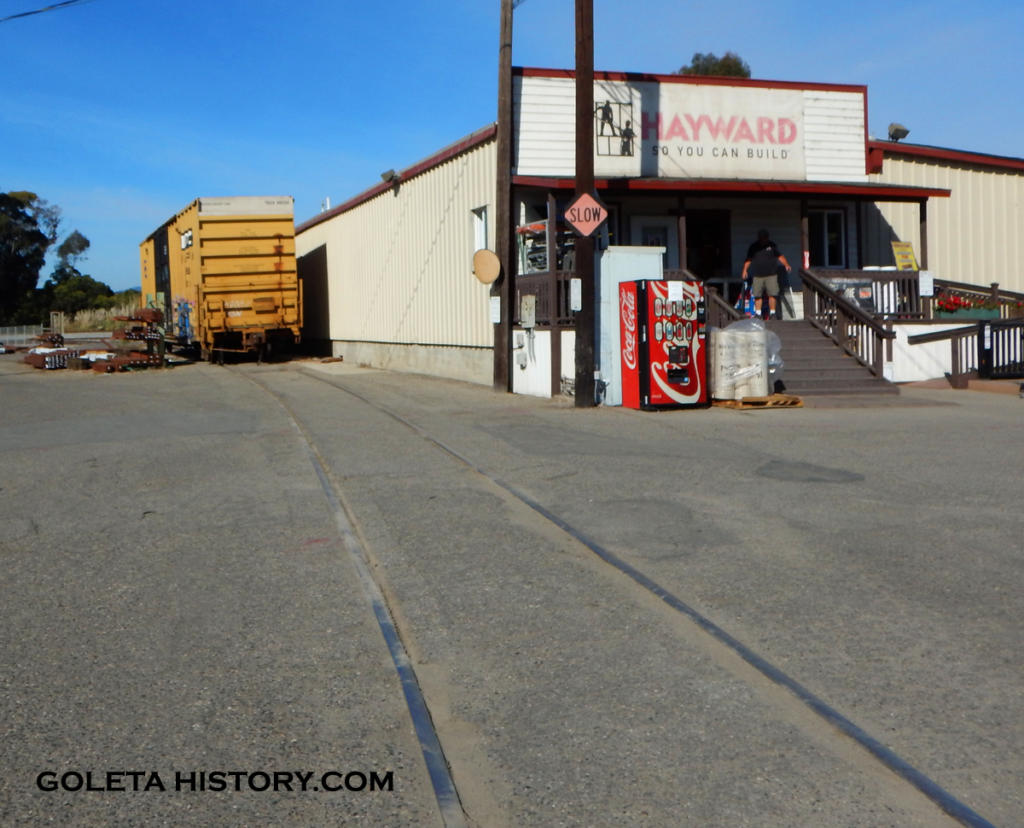 Most folks that visit Hayward Lumber have no idea this old track was built for the Marine base.
Most folks that visit Hayward Lumber have no idea this old track was built for the Marine base.
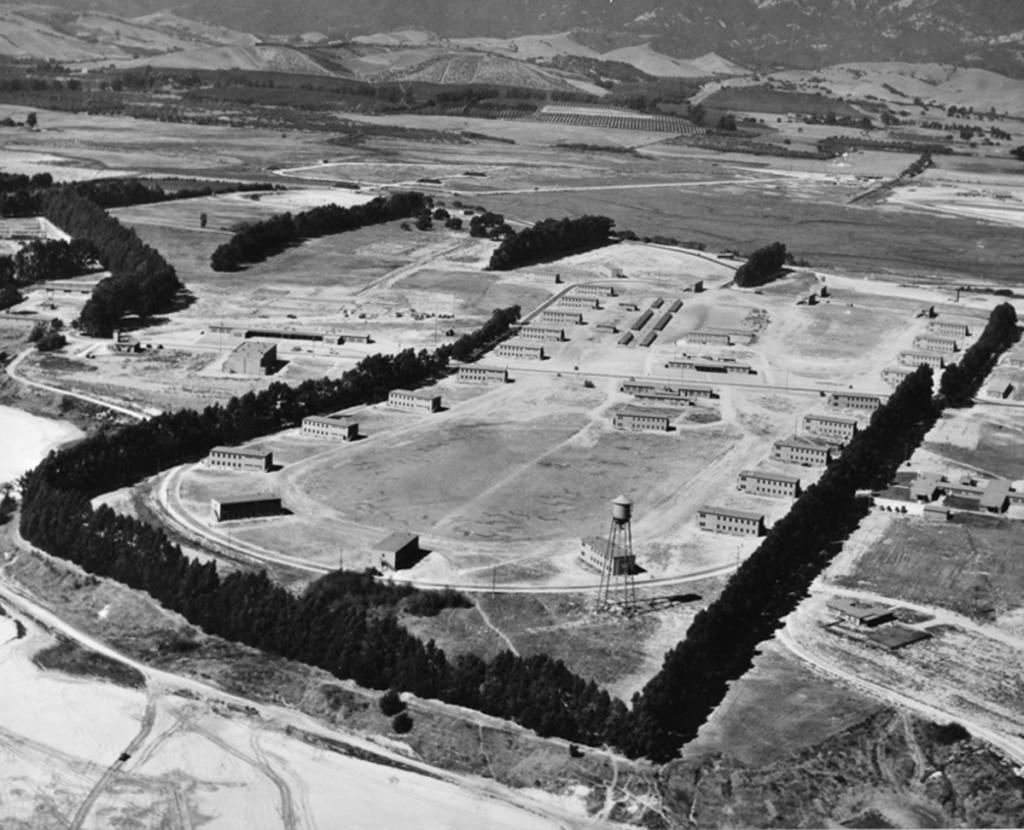 Life got a little easier for the Marines with the construction of new living quarters. Due to the marshy slough surrounding the air base, the operations and the housing had to be widely separated.
Life got a little easier for the Marines with the construction of new living quarters. Due to the marshy slough surrounding the air base, the operations and the housing had to be widely separated.  The barracks, mess halls, chapels, theaters, laundry, administration buildings and other facilities were built on the mesa above the slough. Over 100 wooden buildings were built by mid 1943. Some taxpayers moaned about the frills being built, like the Olympic sized swimming pool and the fancy Officers Club, but the Navy ignored the critics.
The barracks, mess halls, chapels, theaters, laundry, administration buildings and other facilities were built on the mesa above the slough. Over 100 wooden buildings were built by mid 1943. Some taxpayers moaned about the frills being built, like the Olympic sized swimming pool and the fancy Officers Club, but the Navy ignored the critics. 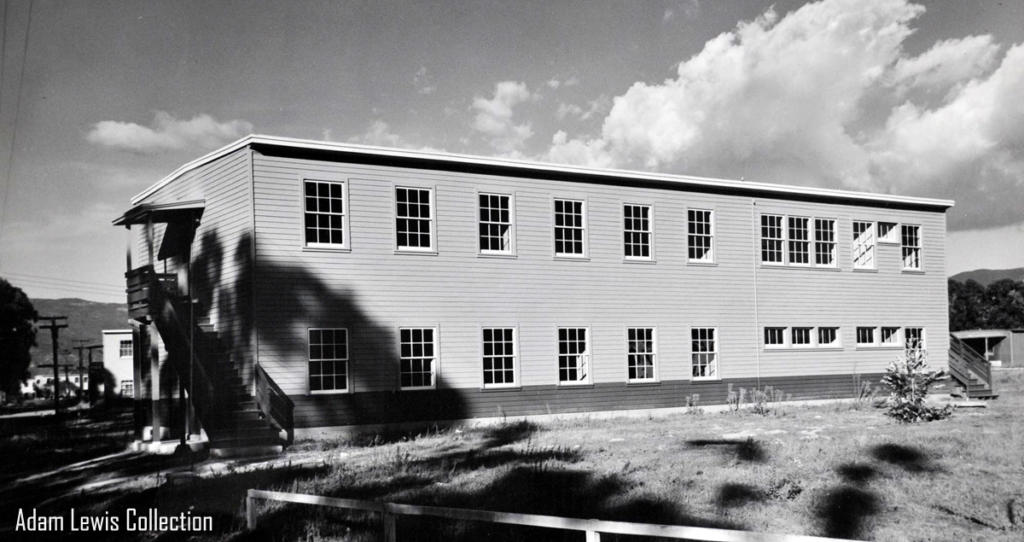 These buildings would later lay the groundwork for the University, as many were easily converted into classrooms.
These buildings would later lay the groundwork for the University, as many were easily converted into classrooms.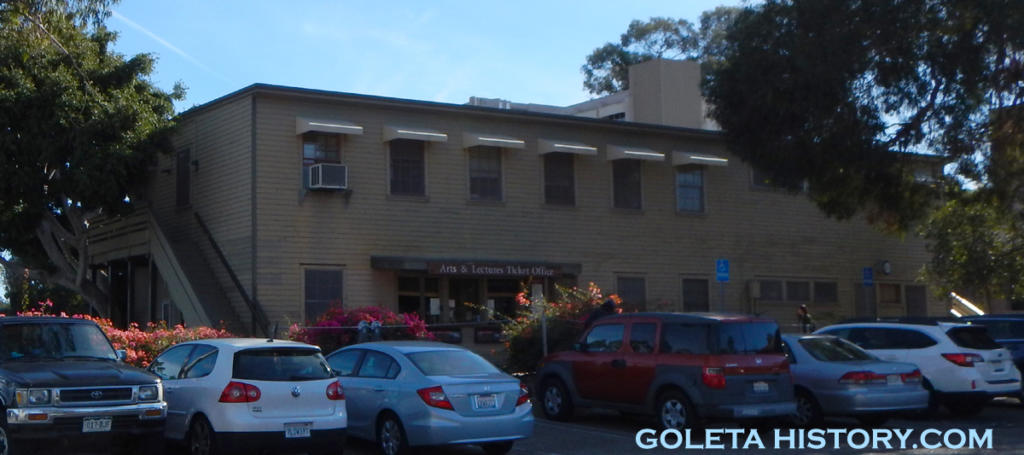 In fact, some are still being used today!
In fact, some are still being used today!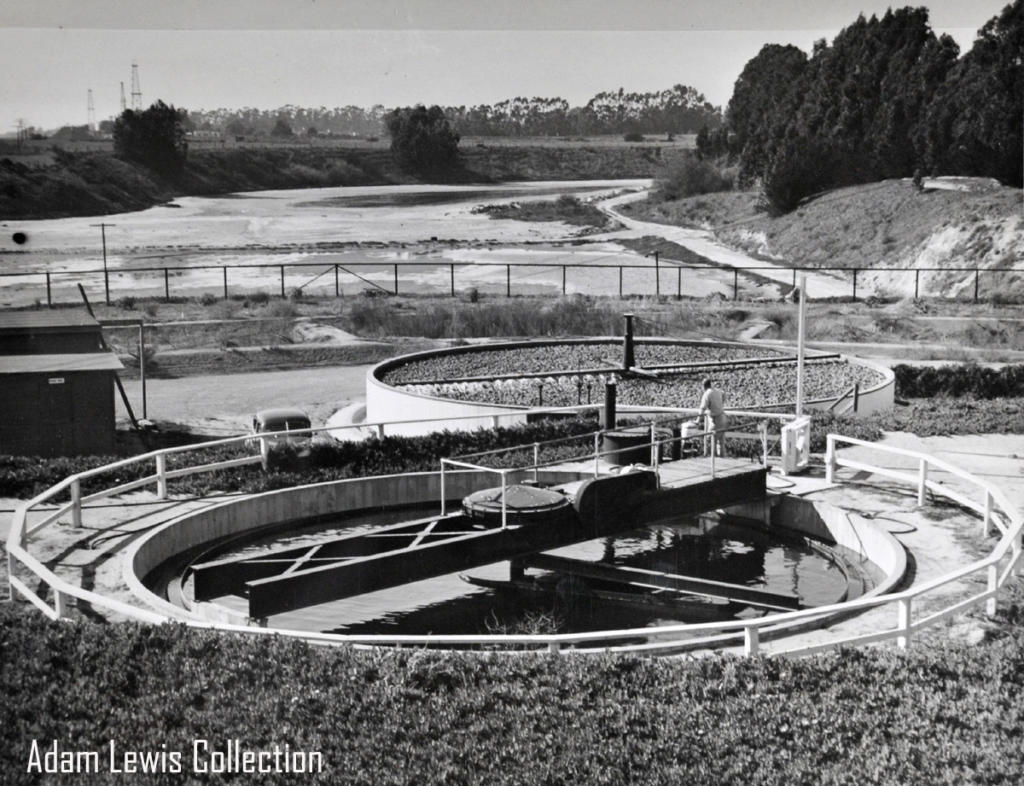 A complete sewer system, disposal plant, telephone and electrical systems were built for a city twice the size of Goleta! This is the sewage disposal plant built on the bluffs between the lagoon and the ocean.
A complete sewer system, disposal plant, telephone and electrical systems were built for a city twice the size of Goleta! This is the sewage disposal plant built on the bluffs between the lagoon and the ocean.
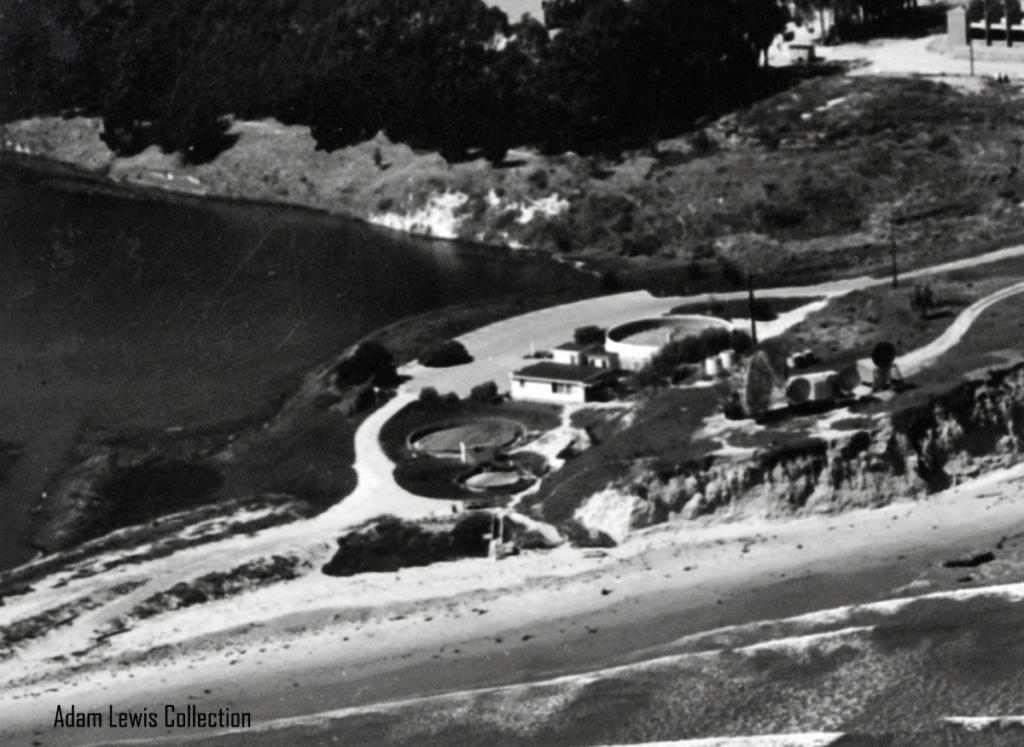 Today this is the location of the UCSB Marine Biotechnology Laboratory.
Today this is the location of the UCSB Marine Biotechnology Laboratory.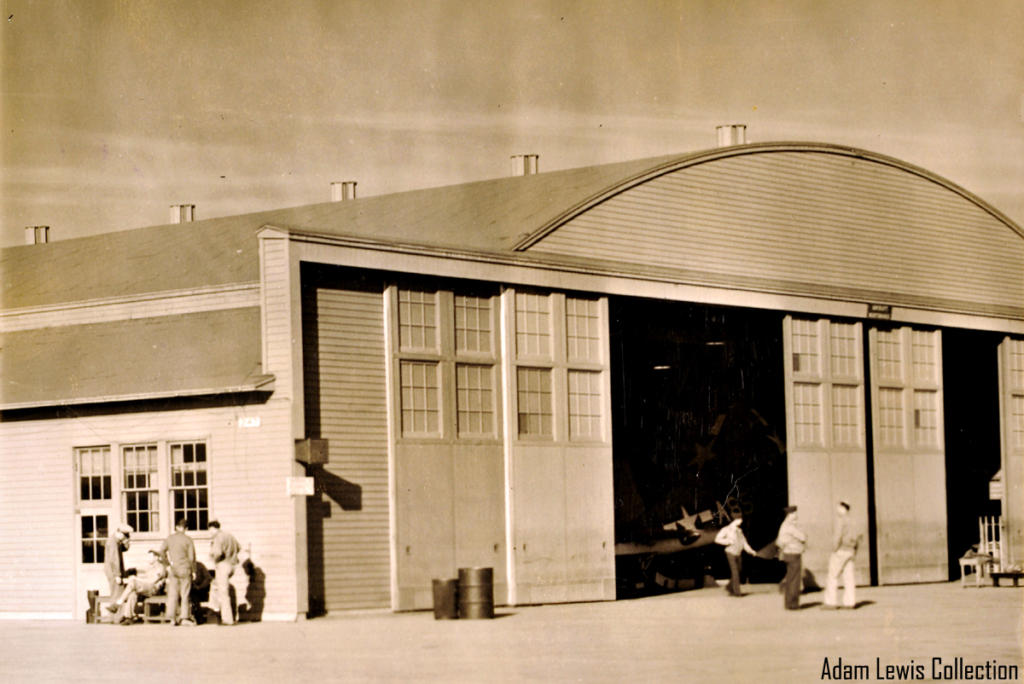 Multiple hangars were built for the squadrons to store and maintain their planes. Even though they were built quickly, they were built to last with quality redwood.
Multiple hangars were built for the squadrons to store and maintain their planes. Even though they were built quickly, they were built to last with quality redwood. Almost all of these hangars are still being used by the airport today.
Almost all of these hangars are still being used by the airport today. 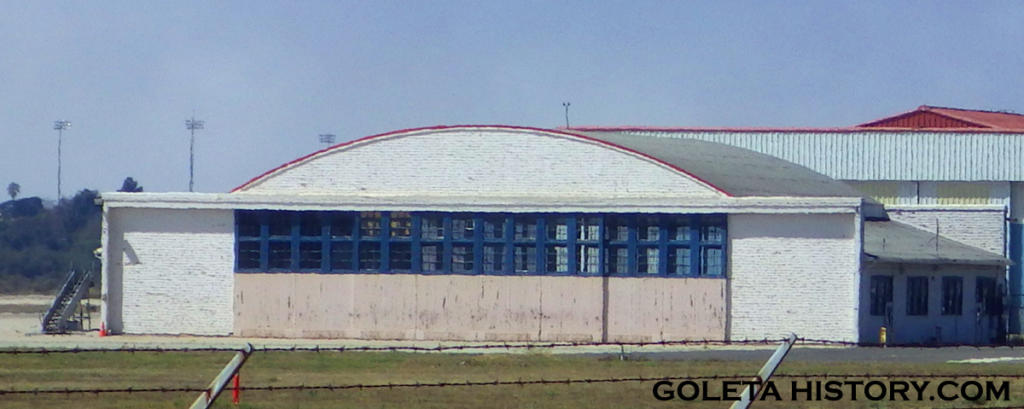 Slightly modified, but mostly just the way the Marines left them.
Slightly modified, but mostly just the way the Marines left them.
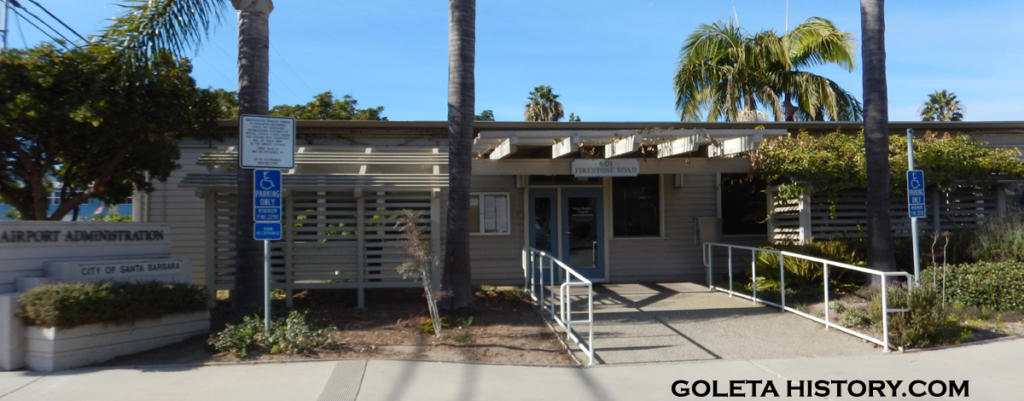 In fact, many of the Marine buildings still exist on both sides of Hollister Avenue today.
In fact, many of the Marine buildings still exist on both sides of Hollister Avenue today.
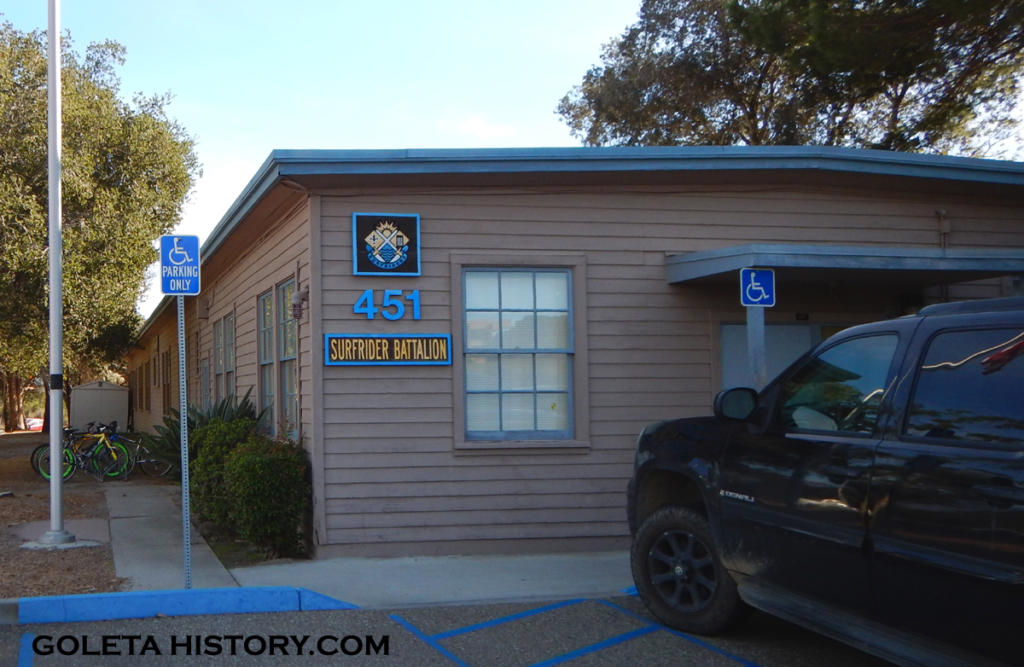 As well as on the campus of UCSB, and almost all of them are still in use. A testament to their sturdy construction.
As well as on the campus of UCSB, and almost all of them are still in use. A testament to their sturdy construction.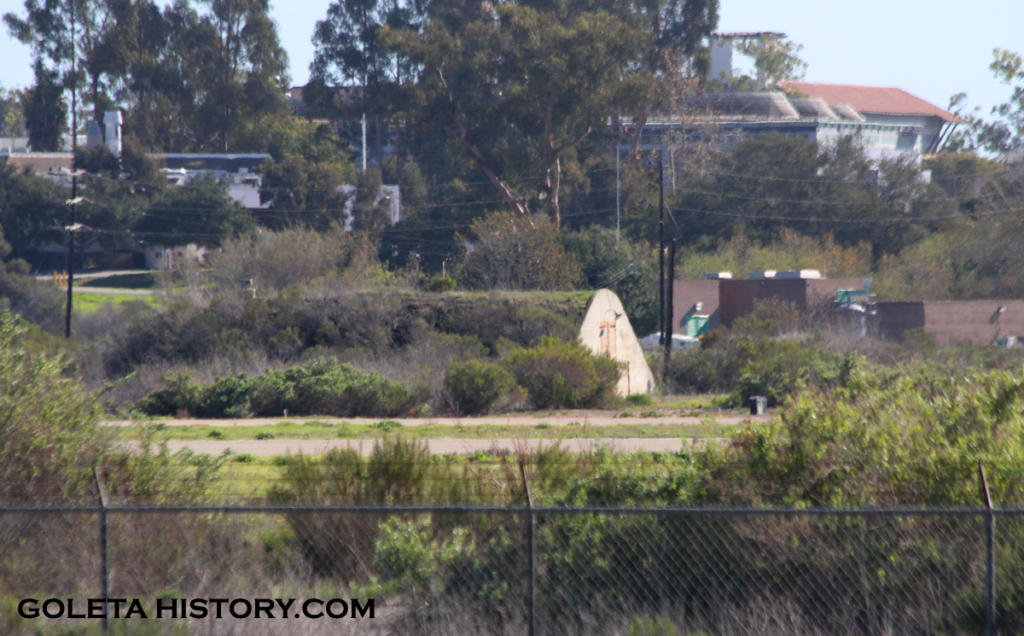 There are some pretty unusual looking buildings around the airport that are easy to overlook, and they were made that way on purpose.
There are some pretty unusual looking buildings around the airport that are easy to overlook, and they were made that way on purpose.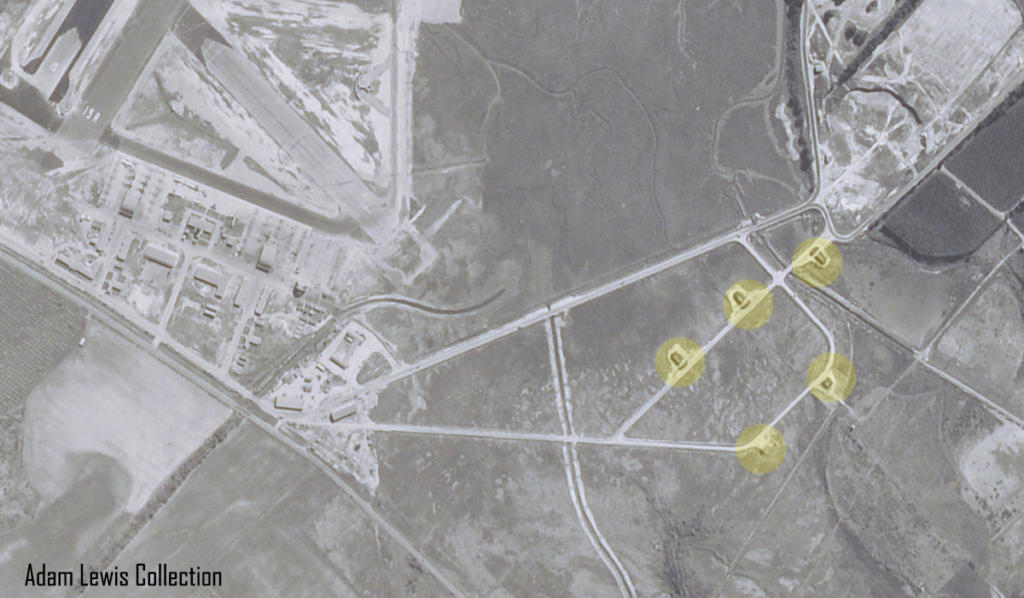 These were ammo bunkers built to store ammunition and explosives and the Marines didn’t want the enemy to know their whereabouts, for obvious reasons. The yellow denotes a few of them.
These were ammo bunkers built to store ammunition and explosives and the Marines didn’t want the enemy to know their whereabouts, for obvious reasons. The yellow denotes a few of them.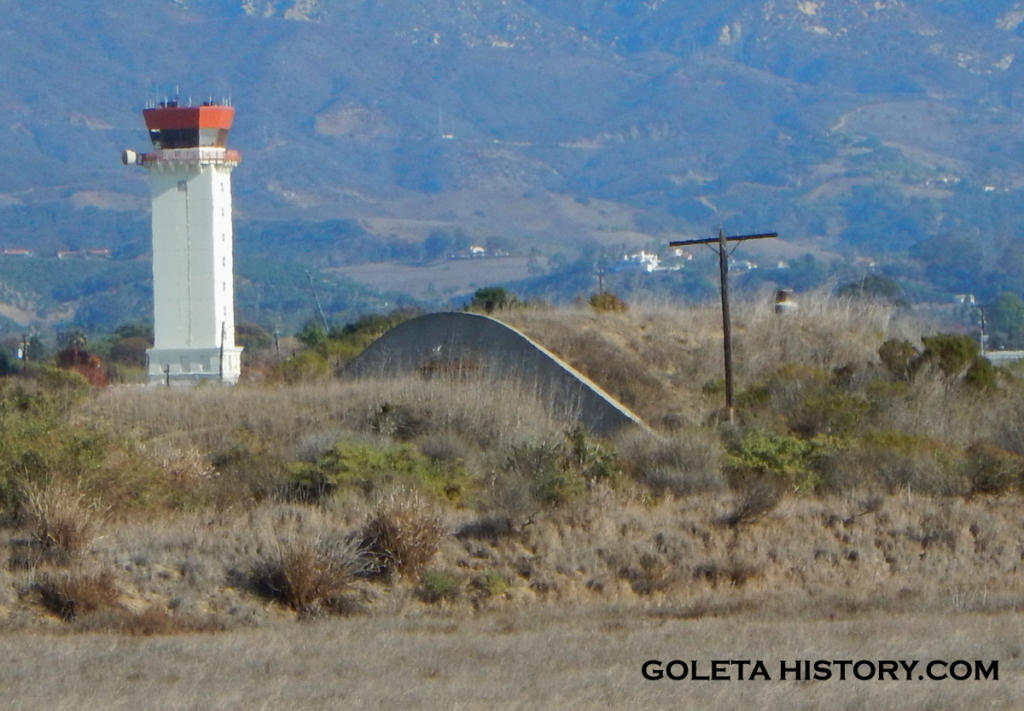 Today they are still being used for storage….but nothing explosive.
Today they are still being used for storage….but nothing explosive.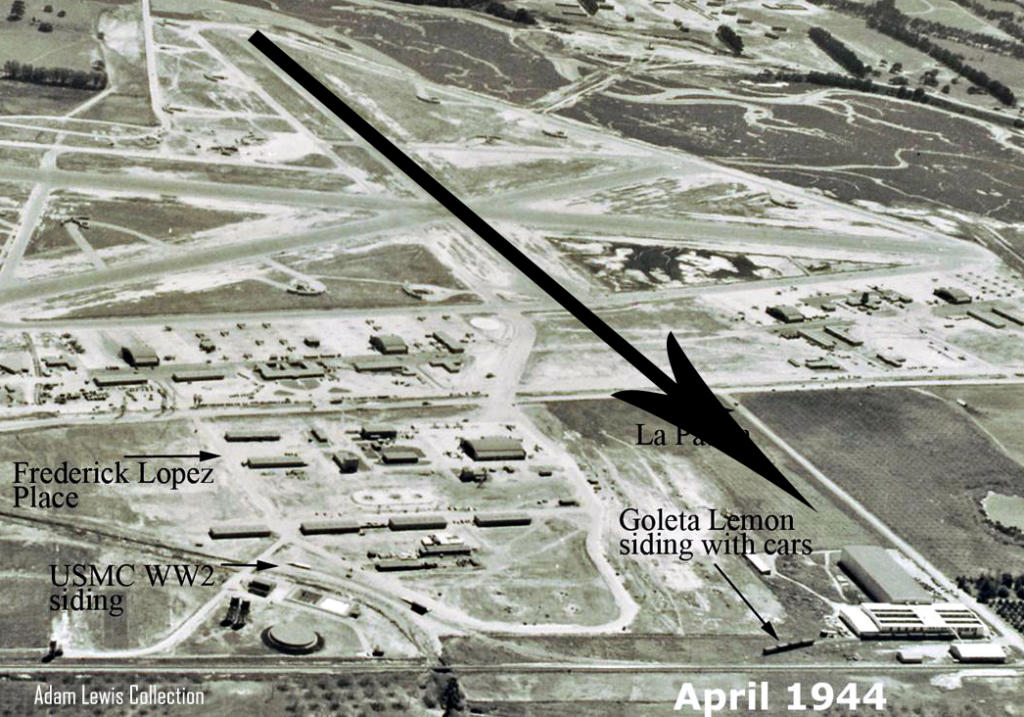 When construction was nearly complete, Navy engineers realized the city’s main north-south runway was in a direct line with the three story Goleta Lemon Association’s packing plant. This was considered a dangerous obstruction, so the Navy brass demanded the whole lemon packing complex be immediately relocated. Cooler heads prevailed, and a parallel runway just west of the original was paved, solving the problem and saving the taxpayers about a million dollars.
When construction was nearly complete, Navy engineers realized the city’s main north-south runway was in a direct line with the three story Goleta Lemon Association’s packing plant. This was considered a dangerous obstruction, so the Navy brass demanded the whole lemon packing complex be immediately relocated. Cooler heads prevailed, and a parallel runway just west of the original was paved, solving the problem and saving the taxpayers about a million dollars.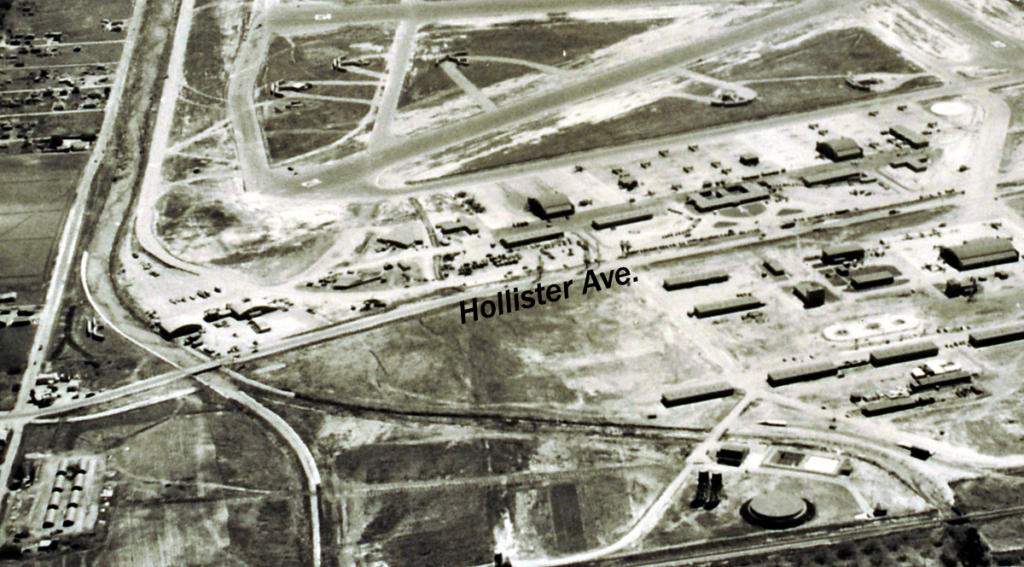 Another difficulty the Marines faced was that Highway 101, which was Hollister Avenue at the time, ran right through the base. Consequently, highway traffic had to be stopped by Marine guards to move aircraft, equipment and supplies across the road, multiple times a day.
Another difficulty the Marines faced was that Highway 101, which was Hollister Avenue at the time, ran right through the base. Consequently, highway traffic had to be stopped by Marine guards to move aircraft, equipment and supplies across the road, multiple times a day. By the time the base was complete, it was considered to be one of the most comfortable places for a Marine to be stationed. The citizens of Santa Barbara and Goleta made the Marines feel right at home. With the memory of the Japanese attack at Ellwood fresh in their minds, the locals considered the Marines their protectors.
By the time the base was complete, it was considered to be one of the most comfortable places for a Marine to be stationed. The citizens of Santa Barbara and Goleta made the Marines feel right at home. With the memory of the Japanese attack at Ellwood fresh in their minds, the locals considered the Marines their protectors.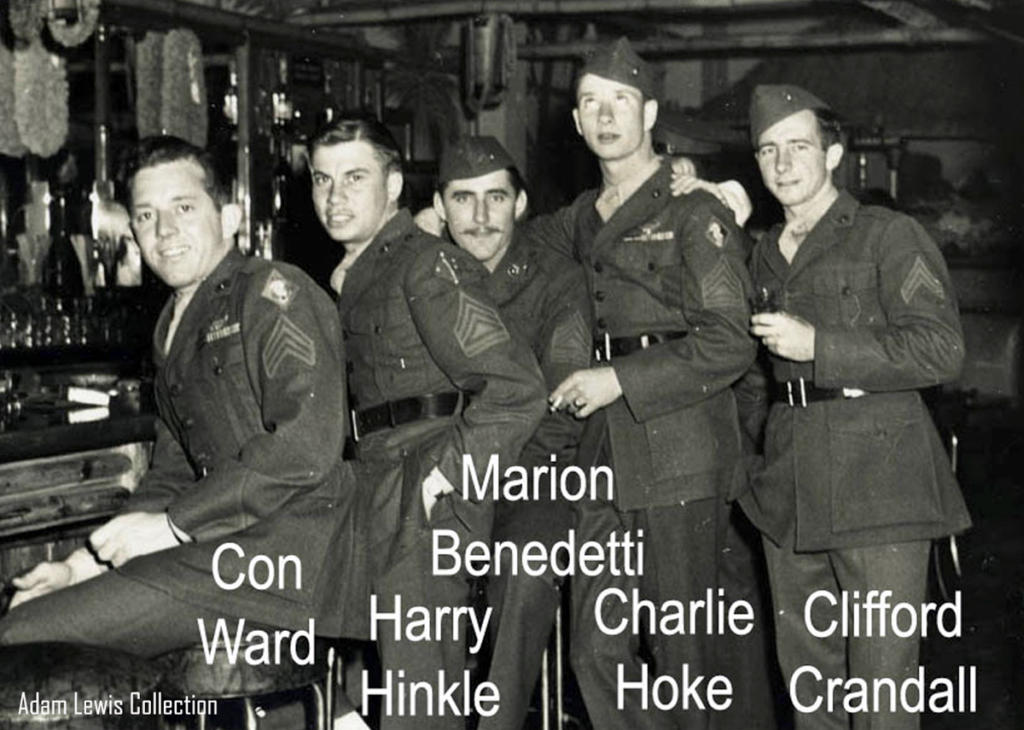 Marines were invited into homes for meals, were treated to drinks at bars and had dances organized for them by the community. Recreation options were horseback riding, golf, roller-skating in town, and a bathhouse at the Beach. The Goleta Station acquired the reputation of being “The Country Club” of the Marine Corps.
Marines were invited into homes for meals, were treated to drinks at bars and had dances organized for them by the community. Recreation options were horseback riding, golf, roller-skating in town, and a bathhouse at the Beach. The Goleta Station acquired the reputation of being “The Country Club” of the Marine Corps.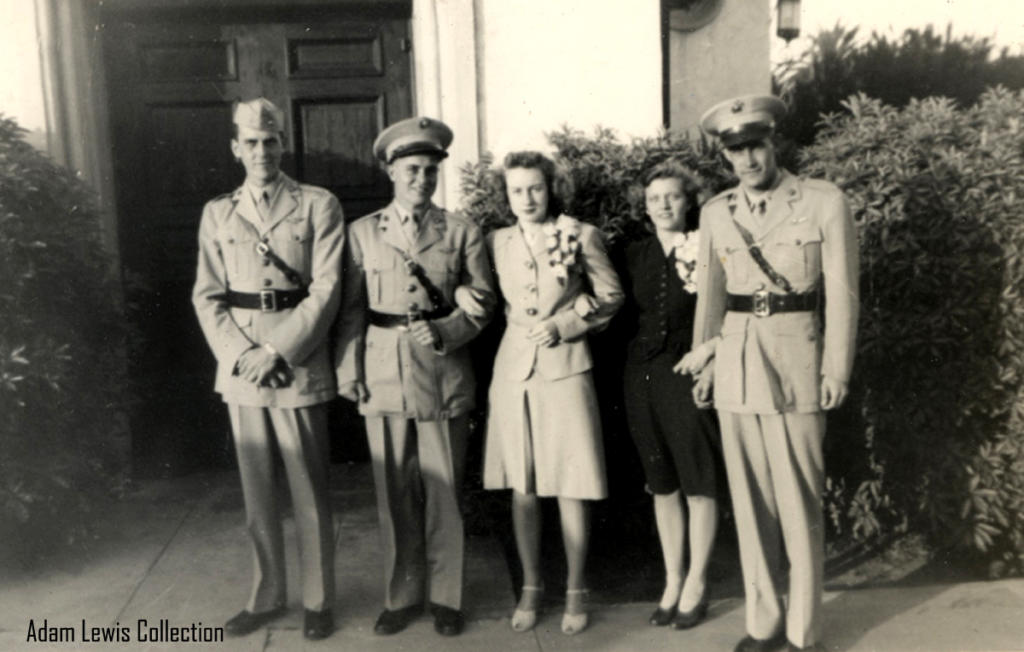 The single women were quite fond of the boys in uniform, in fact the base Chaplain once performed 15 weddings in a single week!
The single women were quite fond of the boys in uniform, in fact the base Chaplain once performed 15 weddings in a single week! 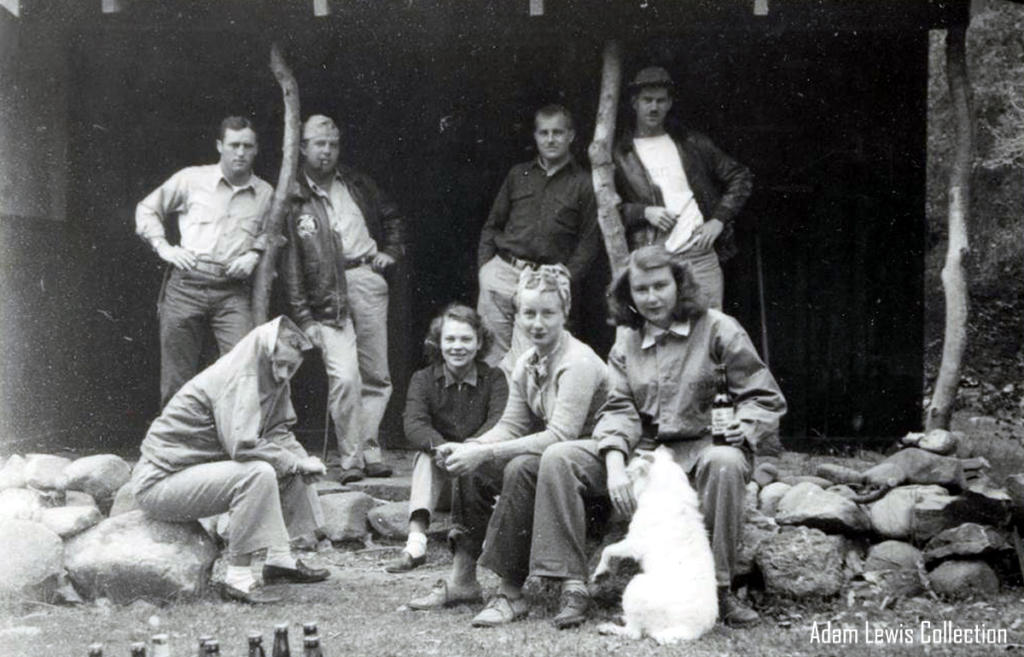 Many of the Marines enjoyed their time in the Goleta area so much, they made it their home after the war ended. Who could blame ’em?
Many of the Marines enjoyed their time in the Goleta area so much, they made it their home after the war ended. Who could blame ’em? But it wasn’t all fun and games. Goleta was the last stop before the Marines went into the Pacific war zone. This base was where pilots and gunners learned the specific skills needed to perform their upcoming combat missions.
But it wasn’t all fun and games. Goleta was the last stop before the Marines went into the Pacific war zone. This base was where pilots and gunners learned the specific skills needed to perform their upcoming combat missions.
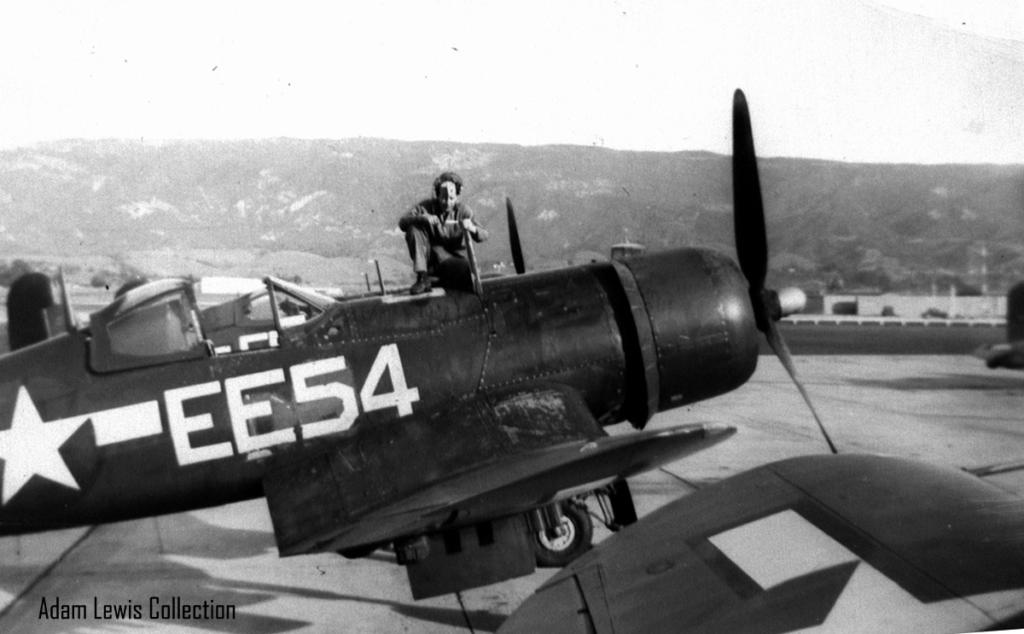 Some of the skills practiced here were torpedo drops, bombing enemy land targets, night flying, aerial gunnery, navigation, formation flying, aircraft and ship recognition and close air support.
Some of the skills practiced here were torpedo drops, bombing enemy land targets, night flying, aerial gunnery, navigation, formation flying, aircraft and ship recognition and close air support.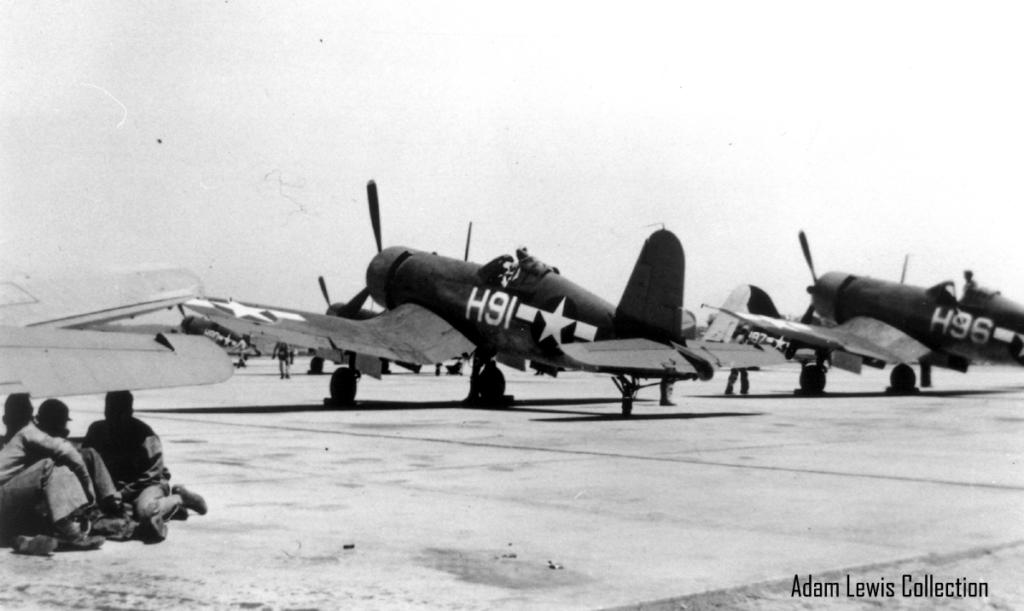 The Corsair was the main fighter plane used here. Unique because of its gull wing design, they were powerful and effective weapons.
The Corsair was the main fighter plane used here. Unique because of its gull wing design, they were powerful and effective weapons. They were nicknamed “the whistling death” by the Japanese, due to the terrifying high-pitched sound made by wind passing through their engine vents.
They were nicknamed “the whistling death” by the Japanese, due to the terrifying high-pitched sound made by wind passing through their engine vents. 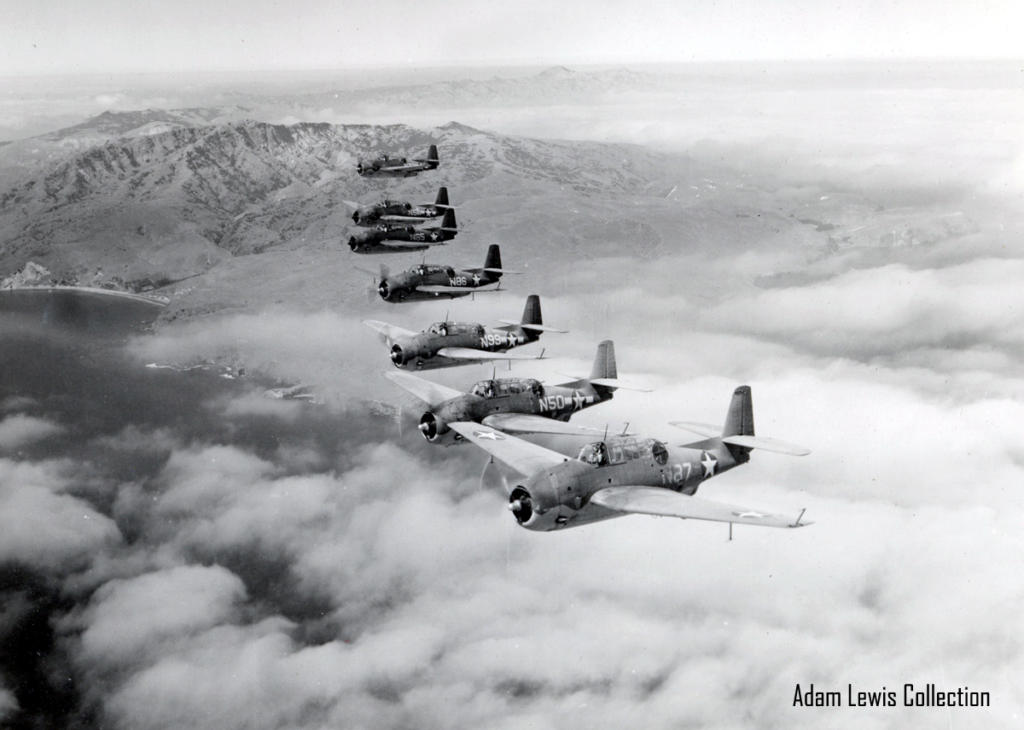 The TBM Avenger was the main bomber plane used at the base. The Avenger had many successes in its combat career and it’s safe to say that the Avengers lived up to their name, avenging the attack on Pearl Harbor.
The TBM Avenger was the main bomber plane used at the base. The Avenger had many successes in its combat career and it’s safe to say that the Avengers lived up to their name, avenging the attack on Pearl Harbor.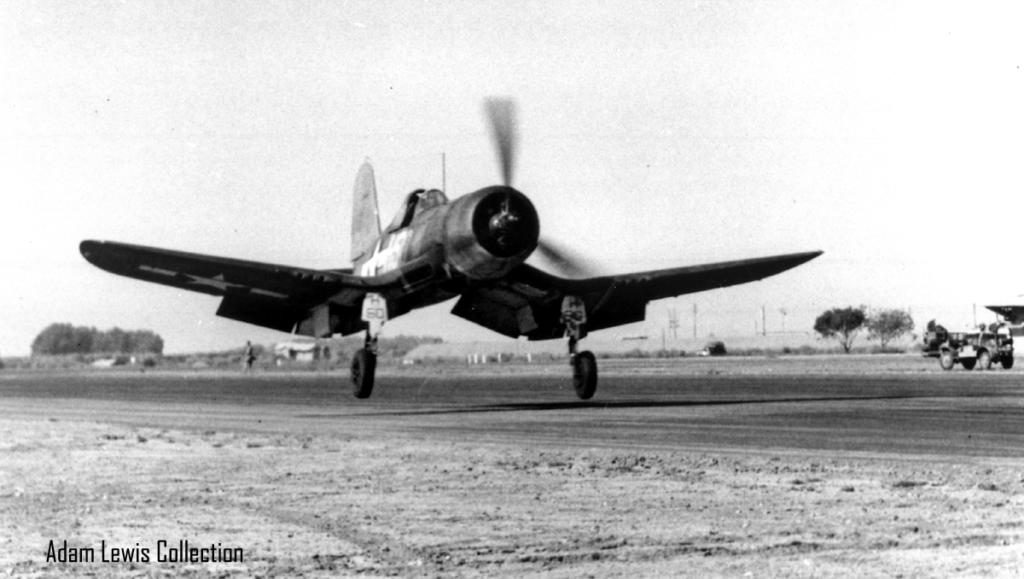 The primary role of Marine pilots was to support the ground troops. Up until 1944, the squadrons were assigned to land-based airfields, but in 1945 almost all the squadrons trained in Goleta were assigned to aircraft carriers.
The primary role of Marine pilots was to support the ground troops. Up until 1944, the squadrons were assigned to land-based airfields, but in 1945 almost all the squadrons trained in Goleta were assigned to aircraft carriers.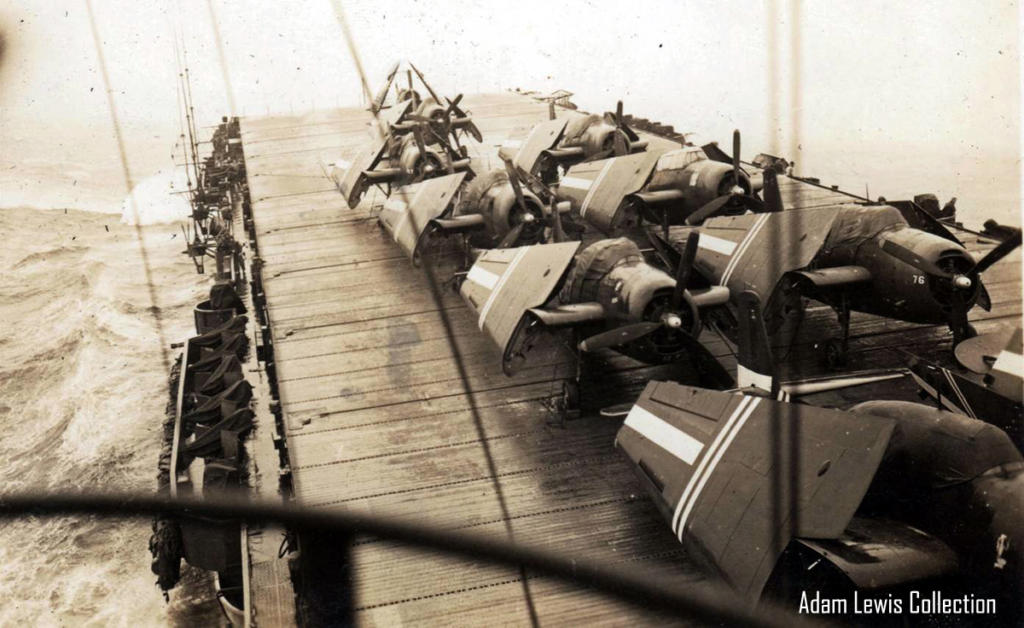 In fact, the main mission of the Goleta Station became training Marines to fly off carriers to provide close air support to Marines on the beaches. And some of those carriers were pretty dang small.
In fact, the main mission of the Goleta Station became training Marines to fly off carriers to provide close air support to Marines on the beaches. And some of those carriers were pretty dang small.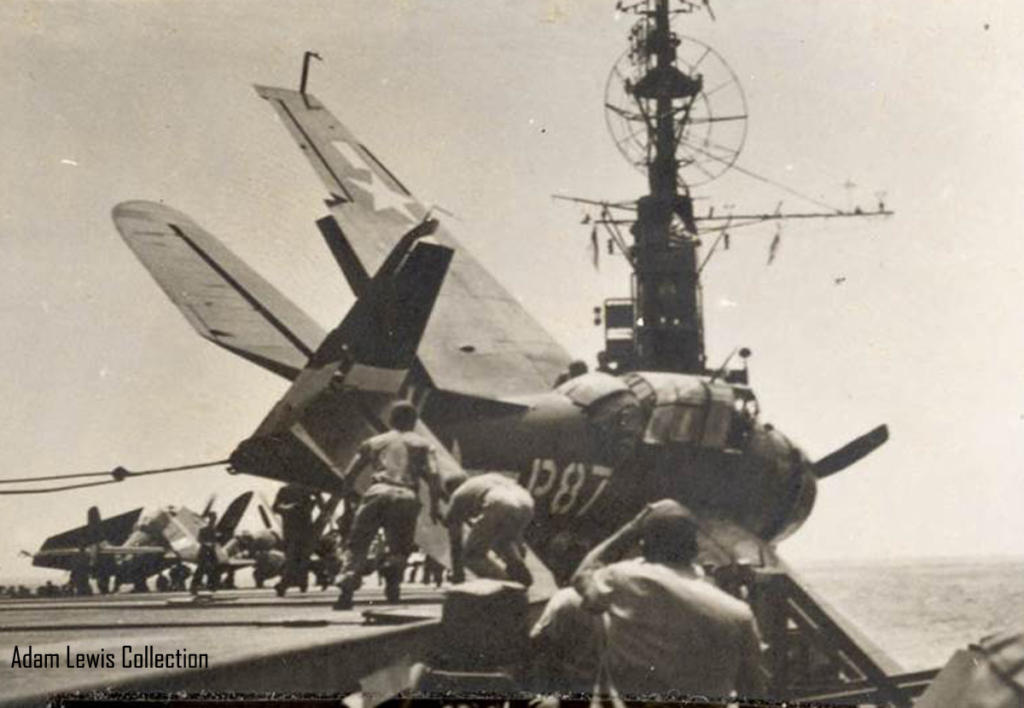 This made their already hazardous duty, even more hazardous….
This made their already hazardous duty, even more hazardous…. While in Goleta the Marine pilots underwent rigorous training routines and logged hundreds of hours of flight time, preparing them for the trials ahead.
While in Goleta the Marine pilots underwent rigorous training routines and logged hundreds of hours of flight time, preparing them for the trials ahead.
 Noisy dogfights were not uncommon in the skies above Goleta and out over the ocean. Some of the young pilots lost their lives in training accidents colliding with other aircraft, crashing into the ocean or slamming into the steep and rugged Santa Ynez mountains. A total of 101 aircraft accidents occurred at Santa Barbara during the war. Probably the worst accident was the collision of two torpedo bombers just off Goleta Point, killing four men instantly.
Noisy dogfights were not uncommon in the skies above Goleta and out over the ocean. Some of the young pilots lost their lives in training accidents colliding with other aircraft, crashing into the ocean or slamming into the steep and rugged Santa Ynez mountains. A total of 101 aircraft accidents occurred at Santa Barbara during the war. Probably the worst accident was the collision of two torpedo bombers just off Goleta Point, killing four men instantly. Commercial fishermen in the 1980’s snagged the wing of a Corsair two miles off Campus Point and these machine guns were still attached. To their dismay, the Coast Guard confiscated them. There is probably more military aircraft wreckage off our coast and in the thick chaparral of our mountains, just waiting to be discovered.
Commercial fishermen in the 1980’s snagged the wing of a Corsair two miles off Campus Point and these machine guns were still attached. To their dismay, the Coast Guard confiscated them. There is probably more military aircraft wreckage off our coast and in the thick chaparral of our mountains, just waiting to be discovered.
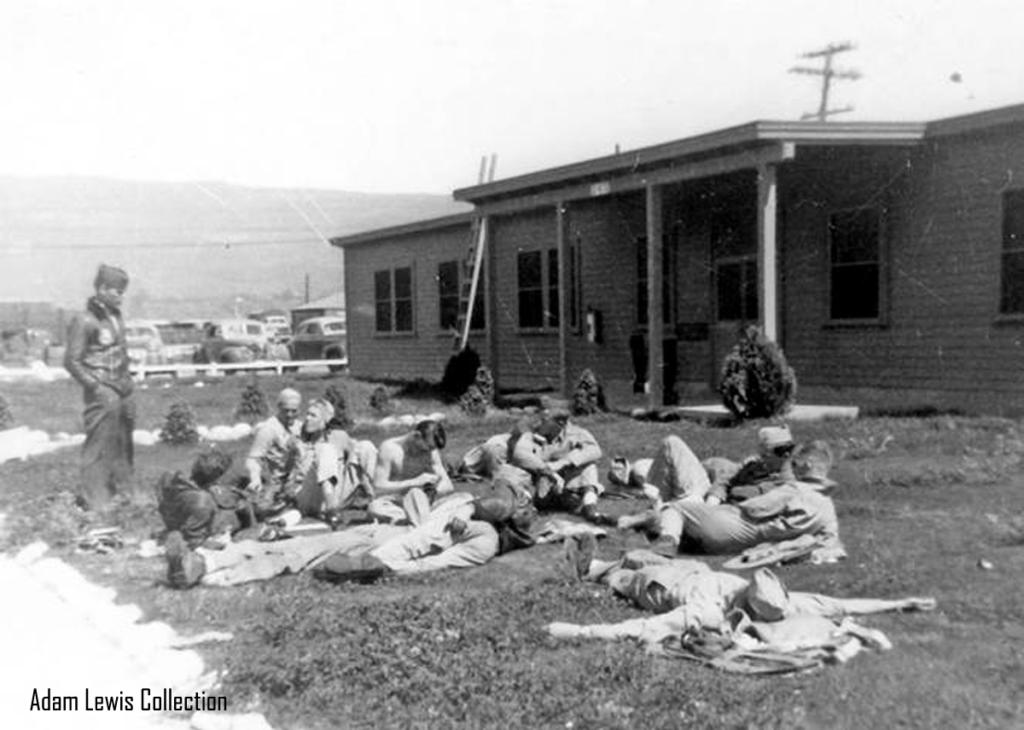 While Goleta may have been considered a plush base to be stationed at, the training they endured was intense. These young boys had to be transformed into men, ready to face a determined enemy, and as quickly as possible. They practiced all aspects of whatever the war might throw at them. We’re not sure what they just finished doing, but clearly the young Marines shown above are exhausted.
While Goleta may have been considered a plush base to be stationed at, the training they endured was intense. These young boys had to be transformed into men, ready to face a determined enemy, and as quickly as possible. They practiced all aspects of whatever the war might throw at them. We’re not sure what they just finished doing, but clearly the young Marines shown above are exhausted.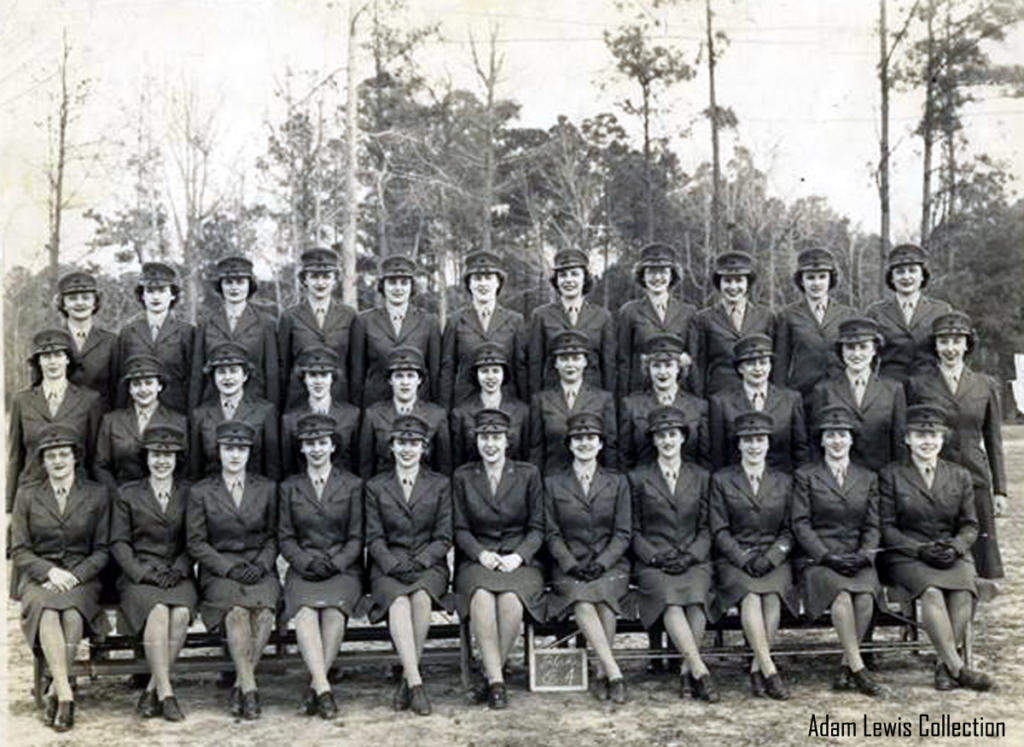 In 1943, the first of the Women Reserves came aboard the Goleta Air Station. The WR took over two of the men’s barracks and ate in the men’s mess hall until their own barracks and mess hall were completed in 1944. Barracks were built to accommodate over 400 women.
In 1943, the first of the Women Reserves came aboard the Goleta Air Station. The WR took over two of the men’s barracks and ate in the men’s mess hall until their own barracks and mess hall were completed in 1944. Barracks were built to accommodate over 400 women.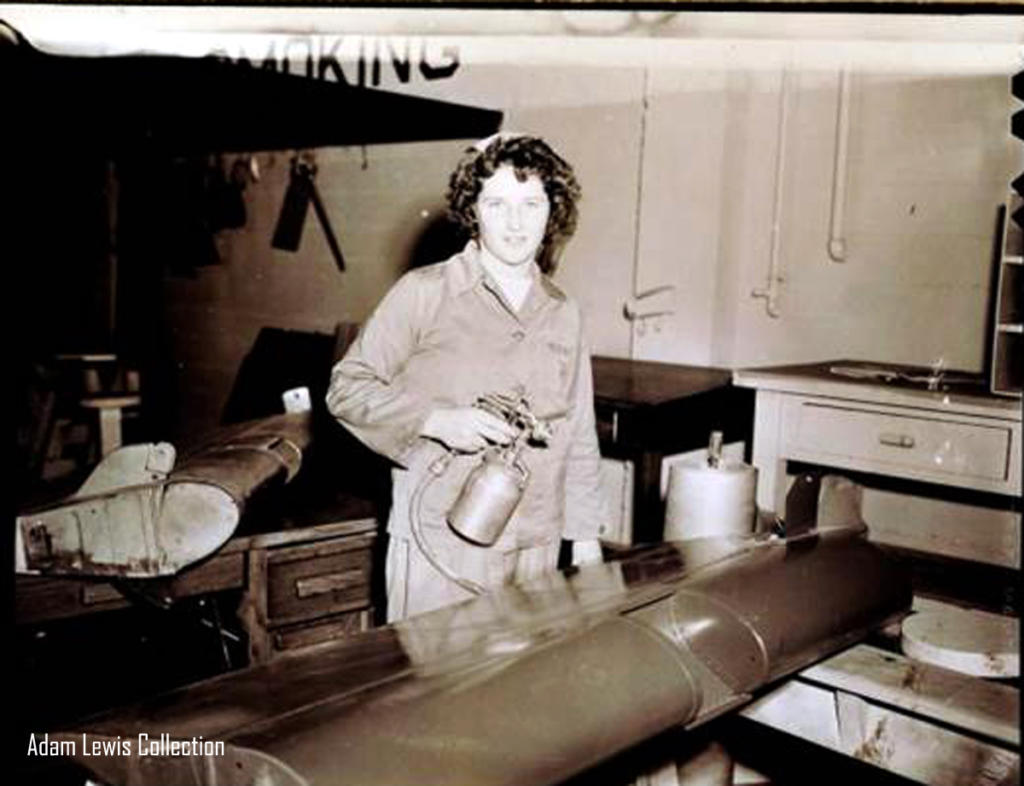 The Women Reserves freed the men up to do combat flying tasks while they performed a number of other important jobs. They operated the gunnery training equipment that was like an arcade game that had pilots shooting an electric machine gun at motion picture targets.
The Women Reserves freed the men up to do combat flying tasks while they performed a number of other important jobs. They operated the gunnery training equipment that was like an arcade game that had pilots shooting an electric machine gun at motion picture targets. 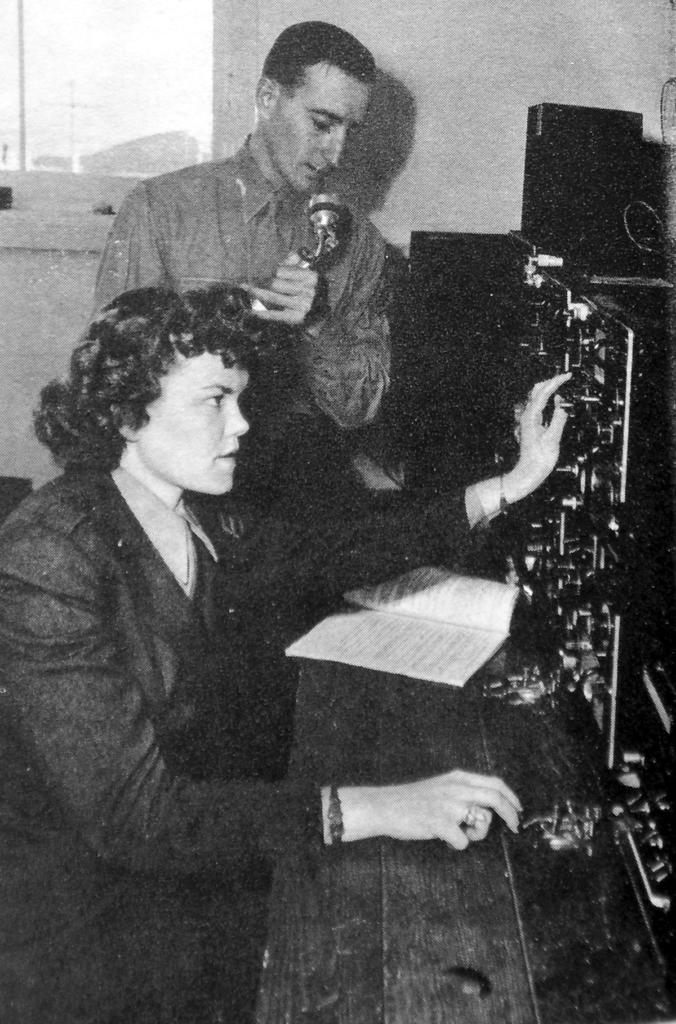 They ran the airplane and ship recognition course that all pilots and gunners were required to take. They drove every type of truck, transported Marines in cattle cars, worked in maintenance and were medical assistants.
They ran the airplane and ship recognition course that all pilots and gunners were required to take. They drove every type of truck, transported Marines in cattle cars, worked in maintenance and were medical assistants. 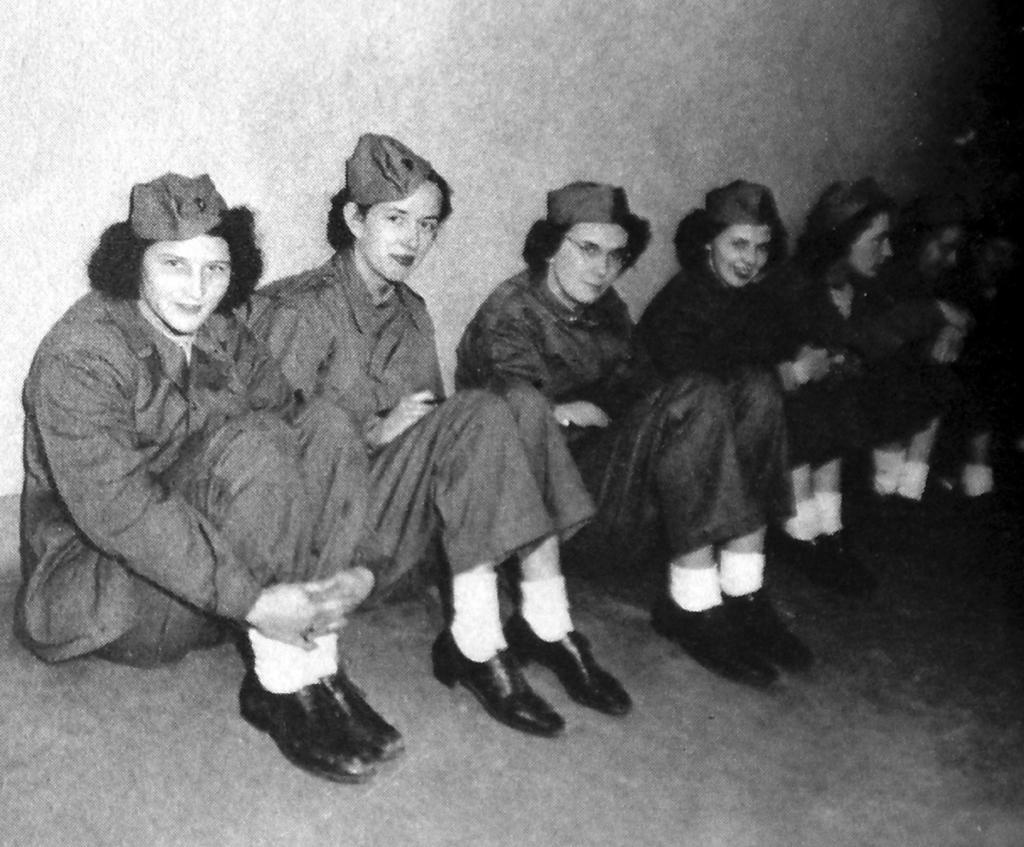 In short, they were a very valuable asset to the base.
In short, they were a very valuable asset to the base. While the Marines were here, Goleta Beach was closed to the public and the county fishing pier at Goleta Beach was used for training. A crane was built and the fuselage from an old bomber was suspended from it. Fully dressed and outfitted for flight, Marine crewmen would board the fuselage, which would then be dropped down into the water. They had to escape within 60 seconds and inflate a life raft. This training surely saved some lives in the South Pacific. Men were also dropped alone from the crane to simulate parachute landings in the ocean.
While the Marines were here, Goleta Beach was closed to the public and the county fishing pier at Goleta Beach was used for training. A crane was built and the fuselage from an old bomber was suspended from it. Fully dressed and outfitted for flight, Marine crewmen would board the fuselage, which would then be dropped down into the water. They had to escape within 60 seconds and inflate a life raft. This training surely saved some lives in the South Pacific. Men were also dropped alone from the crane to simulate parachute landings in the ocean.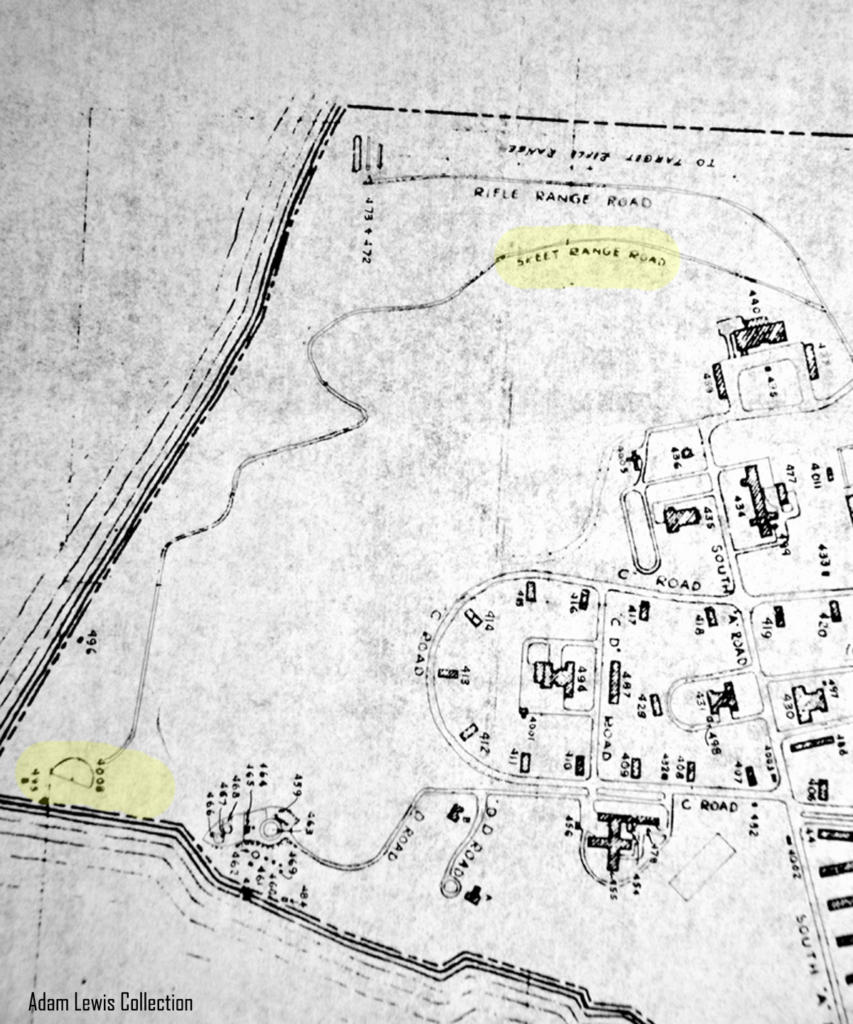 Out on Campus Point, the Marines had a rifle range and a skeet range for target practice.
Out on Campus Point, the Marines had a rifle range and a skeet range for target practice. The circle shows where the skeet range was located. If you walk out there today, you can still find remnants of the broken skeets that were shot by the Marines.
The circle shows where the skeet range was located. If you walk out there today, you can still find remnants of the broken skeets that were shot by the Marines. A reader sent us this amazing photo of his grandfather shooting skeet at the range on Campus Point. Looks like a nice place to practice….
A reader sent us this amazing photo of his grandfather shooting skeet at the range on Campus Point. Looks like a nice place to practice….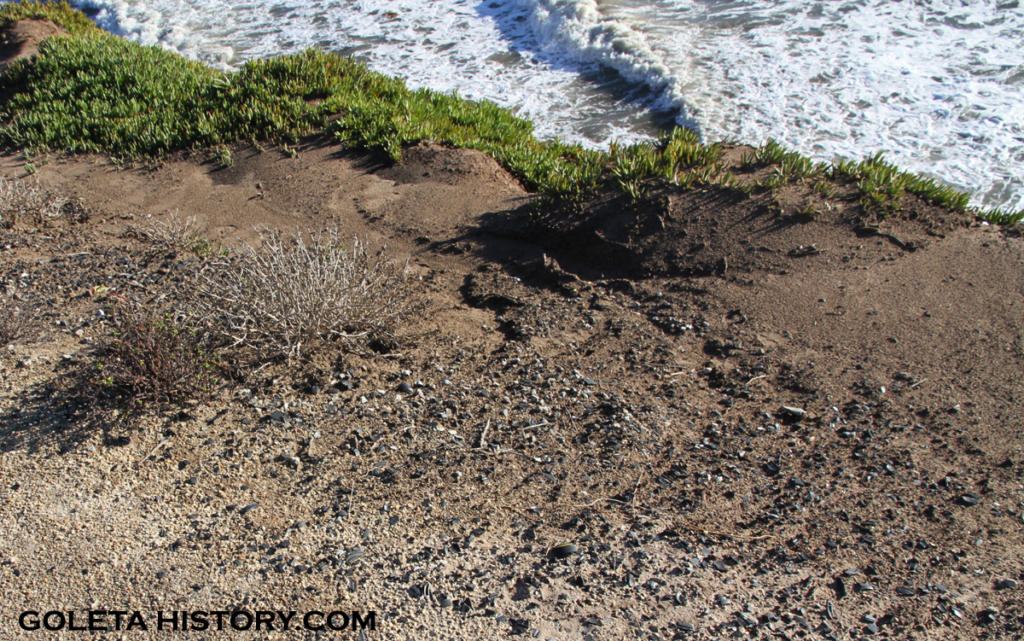 We’ve walked past them thousands of times and never noticed the 70 year old artifacts of World War II right under our feet.
We’ve walked past them thousands of times and never noticed the 70 year old artifacts of World War II right under our feet. If you know where to look, they are abundant. Another remnant from the Marine’s time in Goleta.
If you know where to look, they are abundant. Another remnant from the Marine’s time in Goleta. At its peak, the station housed about 500 officers, 3,100 enlisted men and 440 enlisted women Marines. The government spent over 10 million dollars on the Marine base in Goleta. After the war, the Marines considered making Goleta a permanent base, but the city of Santa Barbara objected because no other land in the area was suitable for an airport. In the end, they got back the original airport property, plus an additional 300 acres confiscated by the government. Most of the Marine buildings along Hollister Avenue were leased out to various businesses.
At its peak, the station housed about 500 officers, 3,100 enlisted men and 440 enlisted women Marines. The government spent over 10 million dollars on the Marine base in Goleta. After the war, the Marines considered making Goleta a permanent base, but the city of Santa Barbara objected because no other land in the area was suitable for an airport. In the end, they got back the original airport property, plus an additional 300 acres confiscated by the government. Most of the Marine buildings along Hollister Avenue were leased out to various businesses. 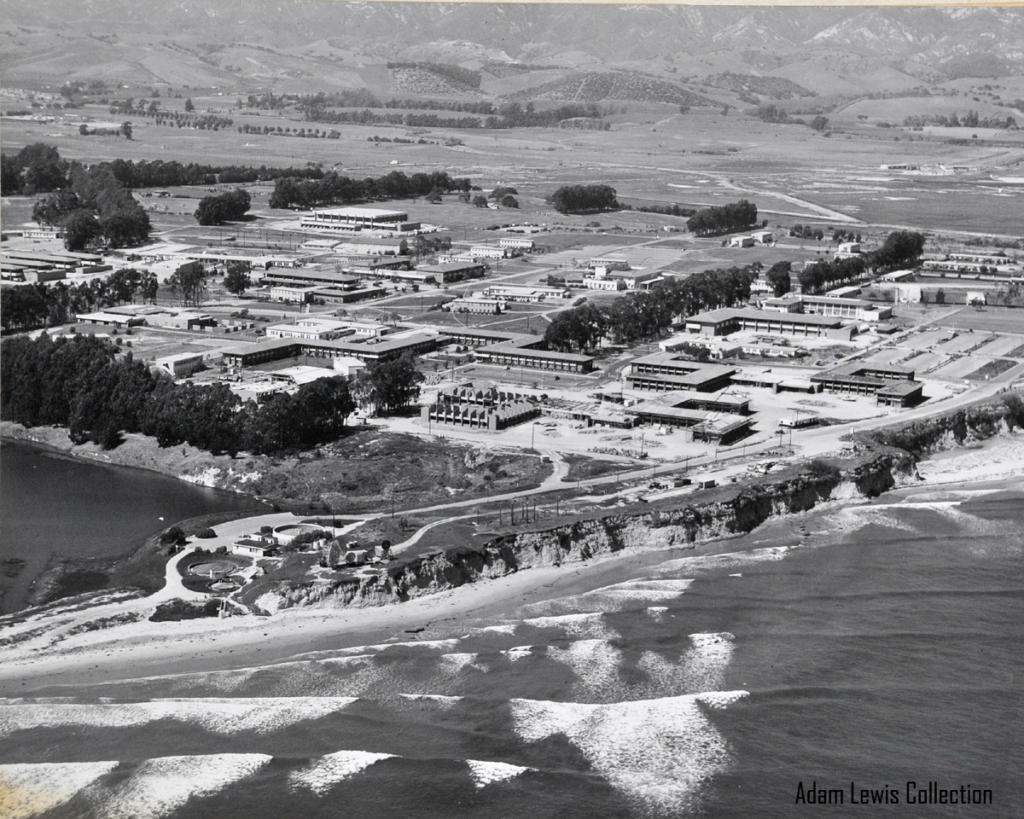 The California Board of Regents got the 400 acres of confiscated land on the bluffs, and that became UCSB. They began remodeling and expanding immediately.
The California Board of Regents got the 400 acres of confiscated land on the bluffs, and that became UCSB. They began remodeling and expanding immediately.
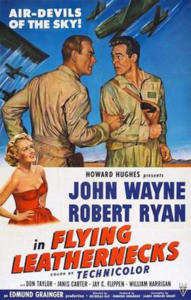 In 1951, a film called Flying Leathernecks was made starring John Wayne and Robert Ryan. In one scene, the main characters discuss Goleta -“I have a station job at Goleta.- A station job? Oh, what a beautiful sound. And Goleta, that beautiful, hot, dirty little town. We’ll probably have to live on the wrong side of the tracks. I’ll never complain about Goleta again.” To see that scene Click Here.
In 1951, a film called Flying Leathernecks was made starring John Wayne and Robert Ryan. In one scene, the main characters discuss Goleta -“I have a station job at Goleta.- A station job? Oh, what a beautiful sound. And Goleta, that beautiful, hot, dirty little town. We’ll probably have to live on the wrong side of the tracks. I’ll never complain about Goleta again.” To see that scene Click Here.
Another scene shows actual footage of a Corsair landing in Goleta, with the Goleta lemon packing plant on La Patera Lane in the background. To see that scene Click Here.
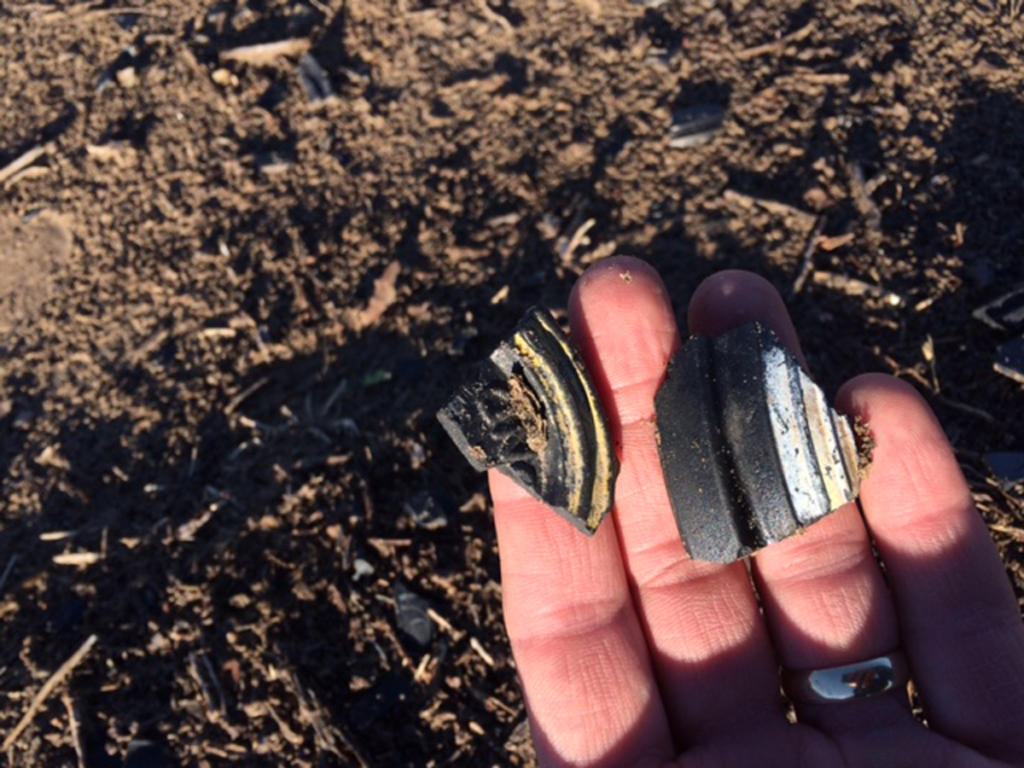 So after 70 years there are still a multitude of reminders of the Marine’s time here in Goleta. From things as subtle as a broken skeet…
So after 70 years there are still a multitude of reminders of the Marine’s time here in Goleta. From things as subtle as a broken skeet… …..To broken down buildings….
…..To broken down buildings…. …..To buildings still being used. And there are also some official monuments…
…..To buildings still being used. And there are also some official monuments…
 On Veterans’ Day in 1948, this memorial was dedicated in front of the Airport Administration building. The plaque reads,”This airport is dedicated to the memory of the pilots and air crews of the United States Marine Corps, trained at this station, who gave their lives to their country. ‘Semper Fidelis’. May 30, 1948.”
On Veterans’ Day in 1948, this memorial was dedicated in front of the Airport Administration building. The plaque reads,”This airport is dedicated to the memory of the pilots and air crews of the United States Marine Corps, trained at this station, who gave their lives to their country. ‘Semper Fidelis’. May 30, 1948.”
Also in 1948, the street names on the airport property were changed to commemorate local military pilots killed in action during World War II. Today around the Airport, you see street names like David Love Place, William L. Moffet Place, James Fowler Place, Frederick Lopez Road, etc. A reminder of the young men that gave their all for our country.
 Now the Pierre Claeyssens Veterans Foundation is working to create a unique and powerful monument commemorating the historical significance of the Marine Corps Air Station at the Santa Barbara Airport. An engineering marvel, the sculpture’s two massive glass wings, weighing over 5 tons each, rise twenty feet tall from stainless steel bases. The wings lean toward each other forming an archway – a symbolic portal to the new age brought about by the end of World War II.
Now the Pierre Claeyssens Veterans Foundation is working to create a unique and powerful monument commemorating the historical significance of the Marine Corps Air Station at the Santa Barbara Airport. An engineering marvel, the sculpture’s two massive glass wings, weighing over 5 tons each, rise twenty feet tall from stainless steel bases. The wings lean toward each other forming an archway – a symbolic portal to the new age brought about by the end of World War II.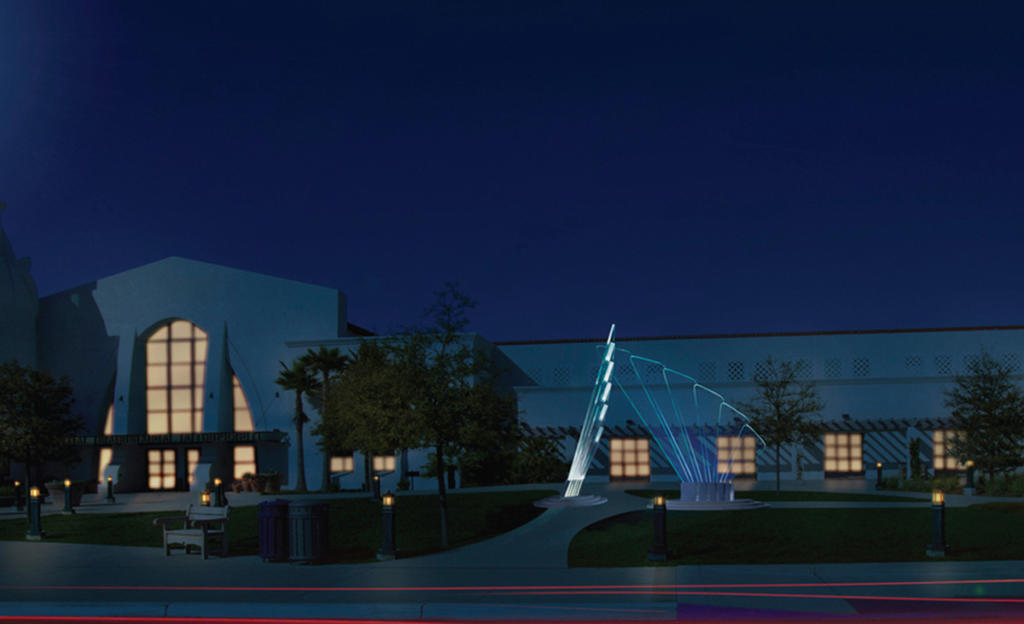 The monument will be placed in front of the new terminal. Learn more and make a donation to this worthy cause at Wings of Honor Santa Barbara.org.
The monument will be placed in front of the new terminal. Learn more and make a donation to this worthy cause at Wings of Honor Santa Barbara.org. Despite the grim job they had ahead of them, and a very uncertain future, there’s nothing but smiles in their yearbook photos. Further testament to the Greatest Generation.
Despite the grim job they had ahead of them, and a very uncertain future, there’s nothing but smiles in their yearbook photos. Further testament to the Greatest Generation.
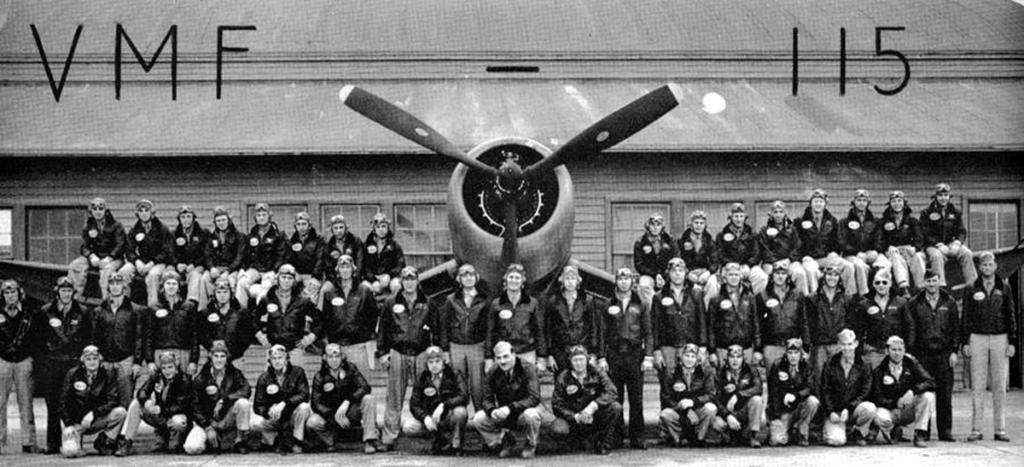 The young men of the United States Marines were on a date with destiny, and they went wherever they had to go to get the job done. We’re thankful Goleta was one of their stops….
The young men of the United States Marines were on a date with destiny, and they went wherever they had to go to get the job done. We’re thankful Goleta was one of their stops….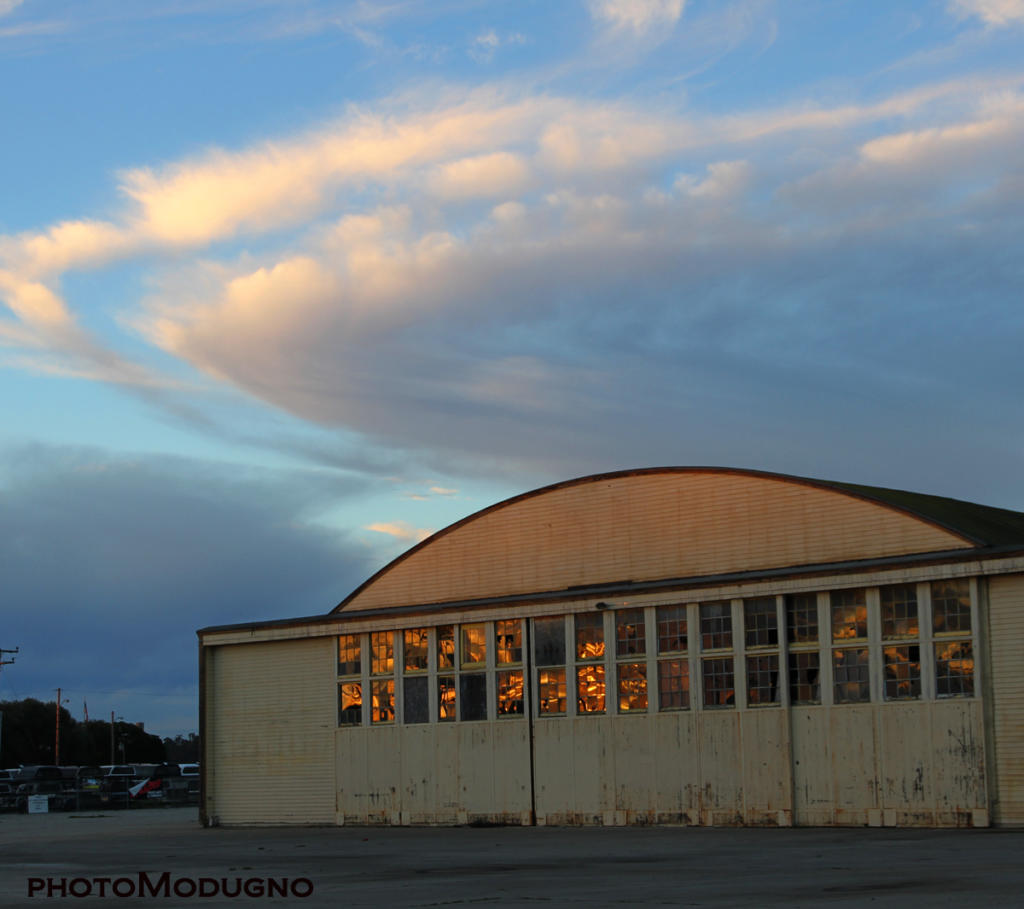 In the few short years that the Marines invaded Goleta, they changed it and they left their mark forever. Semper Fi.
In the few short years that the Marines invaded Goleta, they changed it and they left their mark forever. Semper Fi.
Sources: Wikipedia, John Blankenship, Santa Barbara News Press, this day in aviation.com, M.L. Shettle, Jr., Military Museum.org, Justin Ruhge, Texas flying legends.org, Santa Barbara Municipal Airport, Hazel Johns, Urban Hikers, world of warplanes.com, Corsair: The F4U in World War II and Korea, Walker Tompkins, Rob Evans, 1944 Marine Air Station year book, the Pierre Claeyssens Veterans Foundation, Ron Harkey, KSBY, and very special thanks to Adam Lewis .
Categories: Goleta History

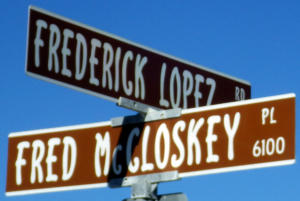

I would love to buy a copy of this article. Is that possible? I did try to print it, but was not able.
Sincerely, Edith Ogella
Thanks Edith, we are hoping to make a print copy soon. In the meantime, wherever you have internet and a computer, you have a copy!
Another great article with lots of your signature depth of detail. Thanks Tom.
Thank you Justin.
Dear Mr. Modugno, thank you for a poignant and detailed history of the
Marine Air Base. I was 8 yrs. old when my family moved to Fairview Ave, across from the airport in 1939. I recall when the Marine airbase was established. I recall seeing the fighters taking off for training.
Is Lake Los Carneros visible in the photo from 1938?
If the dark spot in the upper left is the lake, then what does that vertical line adjacent to the lake represent?
Hi Paul,
The way I see it, the line to the left is Los Carneros Rd. and the line on the right is La Patera Ln.
My Father , 2nd LT Edward P McAleer, joined VMF112 in Santa Barbara in August 1943 where he was checked out in the F4F Corsair before being re-assigned to VMF 441 in Jan 1944. He flew 60 combat missions in the Marshall Is. He earned the DFC & 7 Air medals in WWII He was later called up & flew combat in Korea.
The greatest generation…
My Dad was a 2nd Lt Corsair pilot assigned to VMF 112 in 1943 in Goleta just before being re-assigned to VMF 441 as a replacement pilot in the Marshall Is. I have lots of pictures taken at the base including pictures of him shooting skeet If you would like a copy shoot me an email.
Is anyone able to provide information about a Bob Hope radio show broadcast from Goleta Airport about 1942? Professor Hough at UCSB has been searching for it for several years.
Hi Larry, I ran this by Marine Base historian Adam Lewis and he sent me this link to a blog that says he did a show here Feb 23, 1943.
http://martingrams.blogspot.com/2014/02/bob-hopes-radio-program-on-tour.html
Also, he sent a photo from the Marine Base yearbook of 1944 that I will email to you..
Really enjoyed the article and the pictures. My Grandfather, Mathew D. Lybeck (SSgt) was stationed at MCAS Santa Barbara and was married to my Grandmother, Gertrude (Trudy) Keyes while stationed there. He deployed to the pacific from Goleta with a marine air wing. There is a family story with rather loose details that a group of citizens from Santa Barbara bought all the members of my grandfathers air wing (~480 Marines) Colt 1911 pistols to carry while deployed. Has anyone else heard this or know any more about it? My grandfather later traded the pistol for an electric razor in the mid-50’s…..My Dad remembers seeing the pistol as a kid and that it was traded for the razor. I recently retired from the Navy and having more time, have begun researching the history of my Grandparents wartime experience. My Grandmother spend the duration of the war with friends they met at church in Santa Barbara while my Grandfather was deployed to the Pacific. Thanks for any info.
Great story, I’ve not heard of this!
I was born and raised in Santa Barbara from 1935 until I moved away 1985.It is a beautiful city and I am proud to have lived there. I raised my family in Goleta just off of Fairview Ave. near Lake Carneros. I have a slight memory of the attack at Ellwood, and putting up blankets to black out our windows at night. I do remember the Marines being there, as my older sister married one at that time.
Tom, what a fascinating read! How many hours of research work do you put into this historical work? It’s brilliantly written, with wonderful photos, and I enjoyed the movie clips too! Thank you so much!
PS: I used to be active at the local amateur radio station, W6RFU, that in the mid-70’s was located in one of the wood military buildings.
Joan Barnett
WA6RKS
Thanks Joan! I put in a lot of hours, but I don’t keep track! Very glad to hear you appreciate it, thank you.